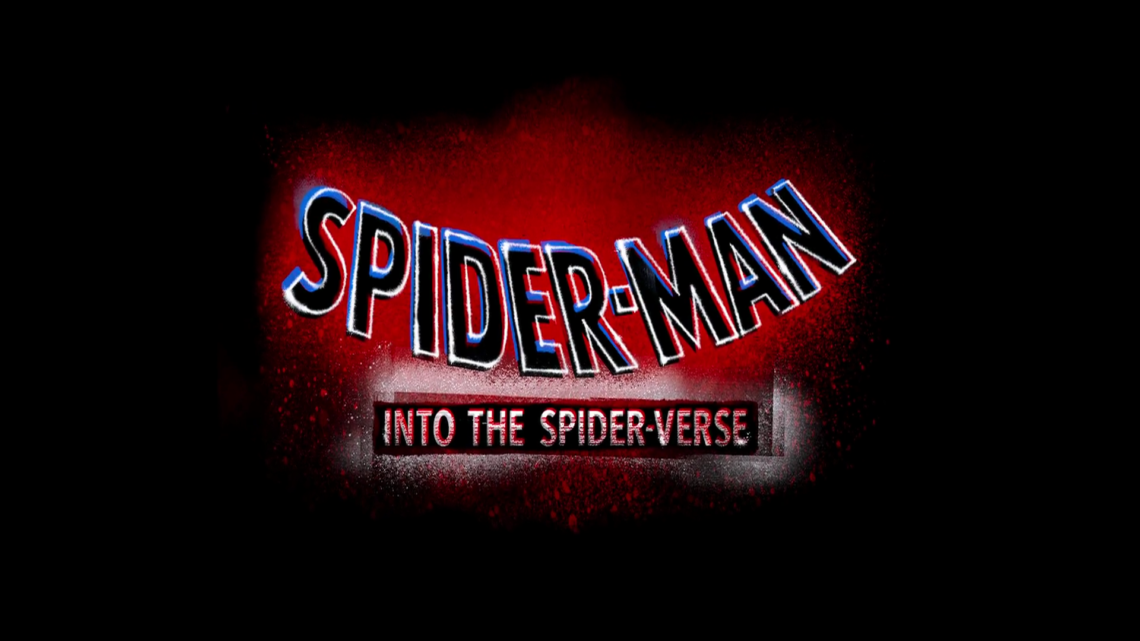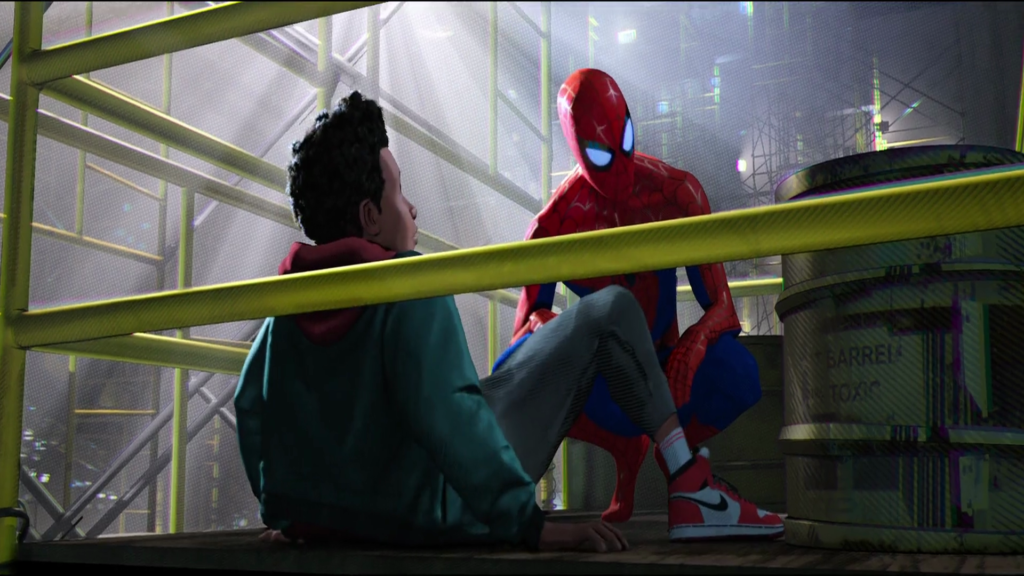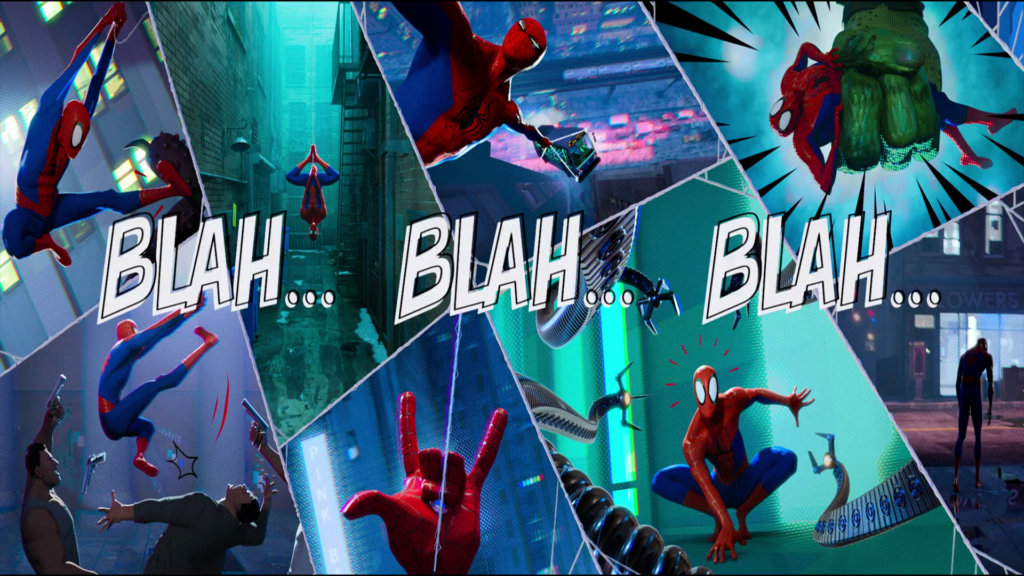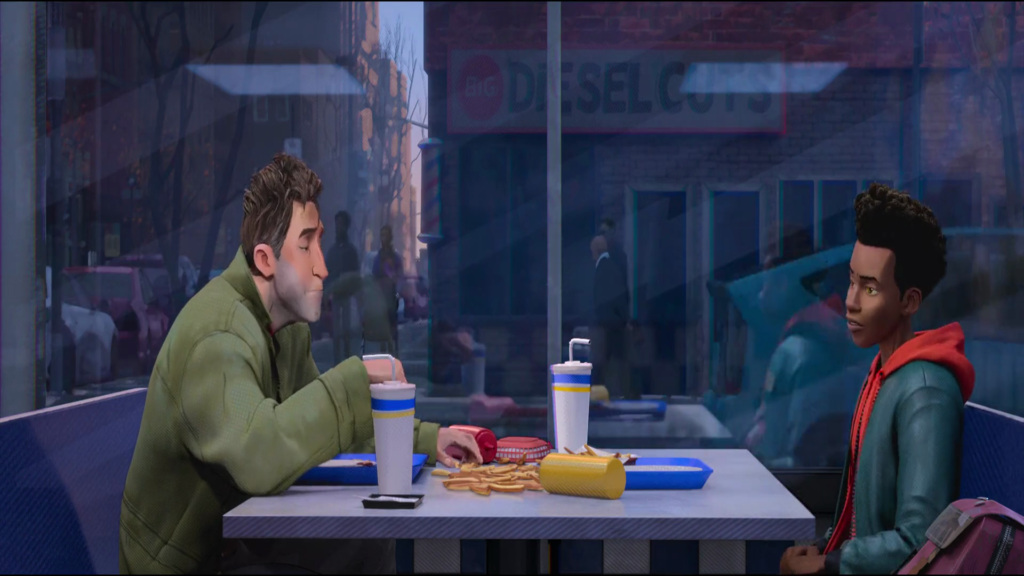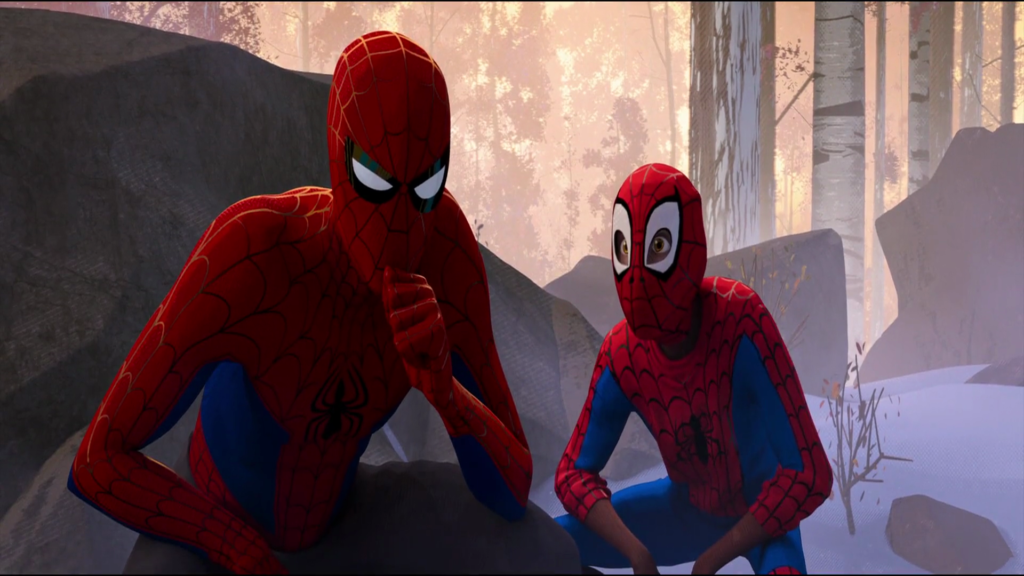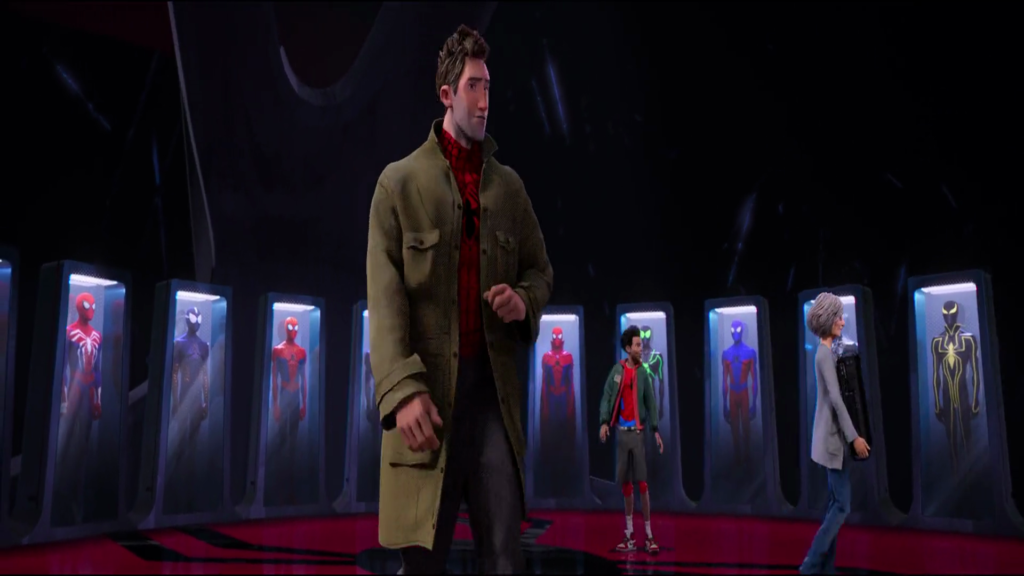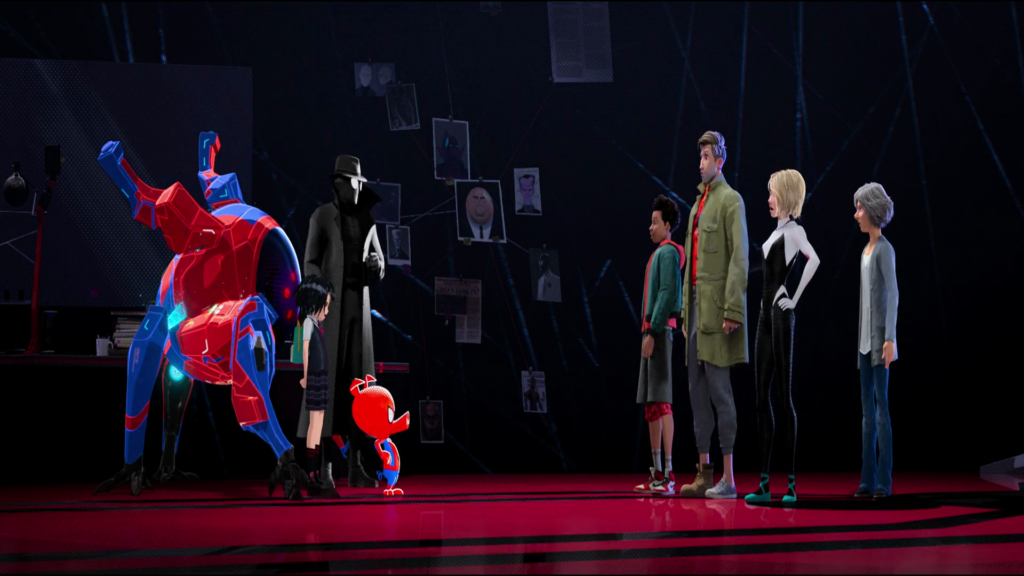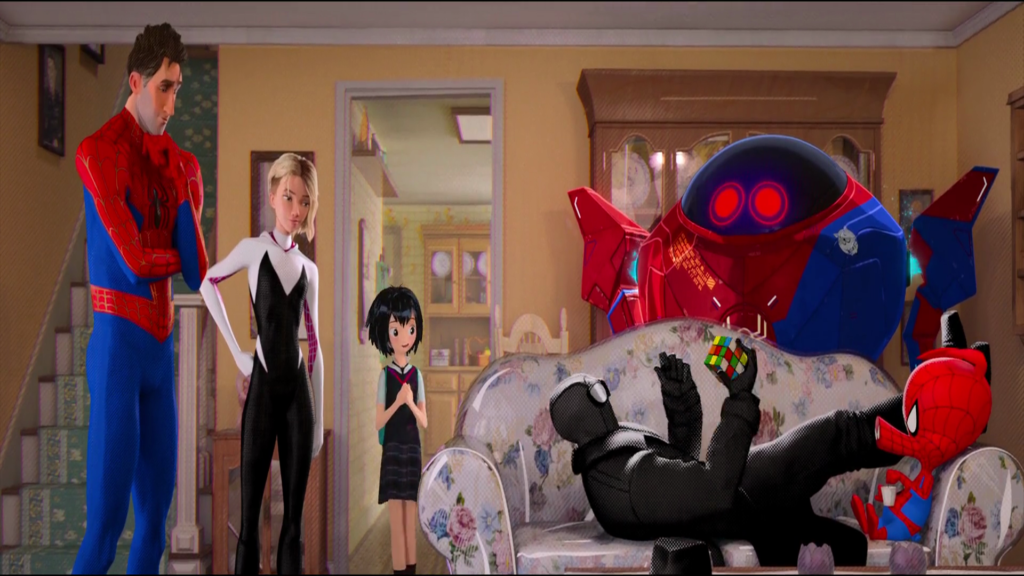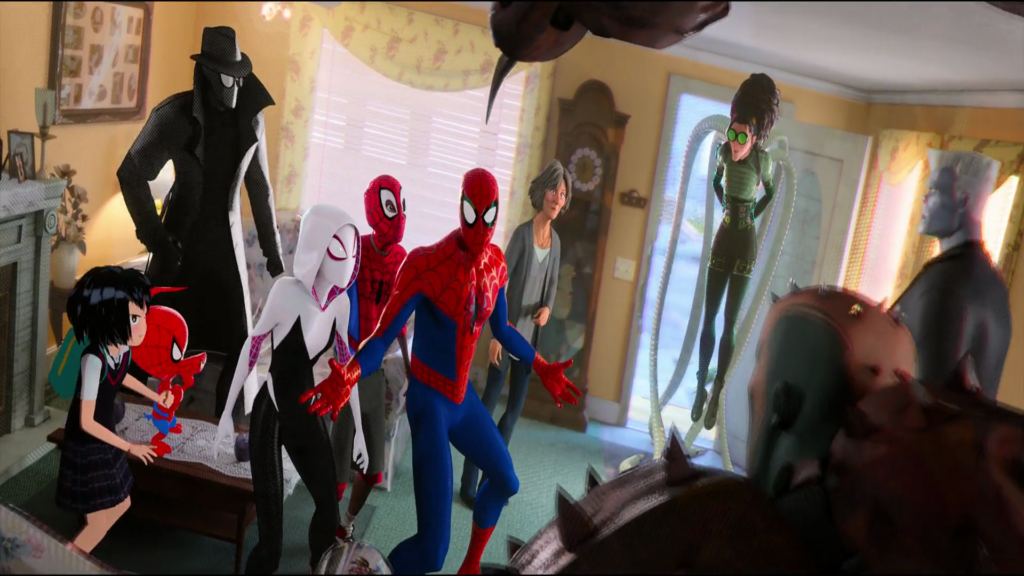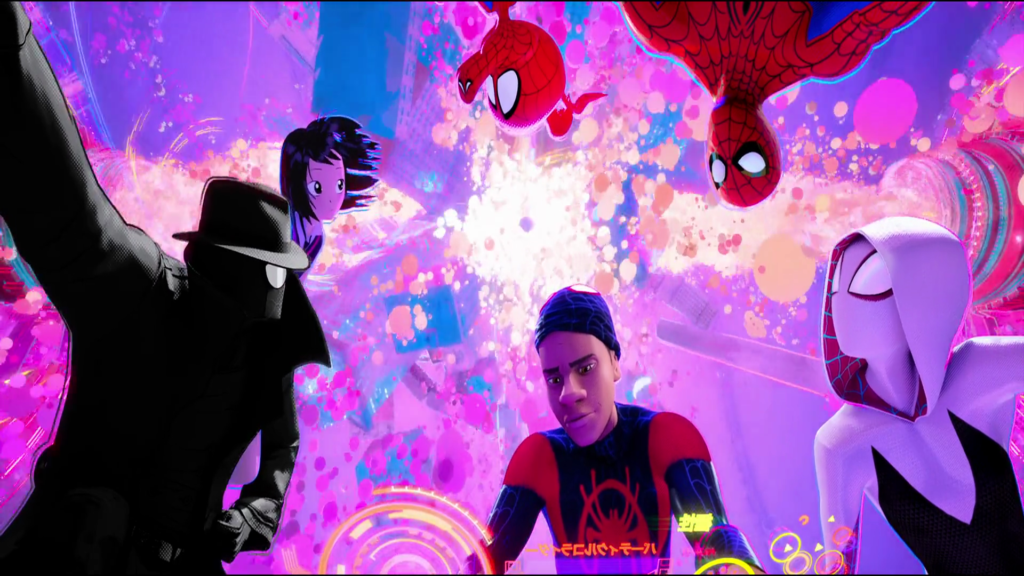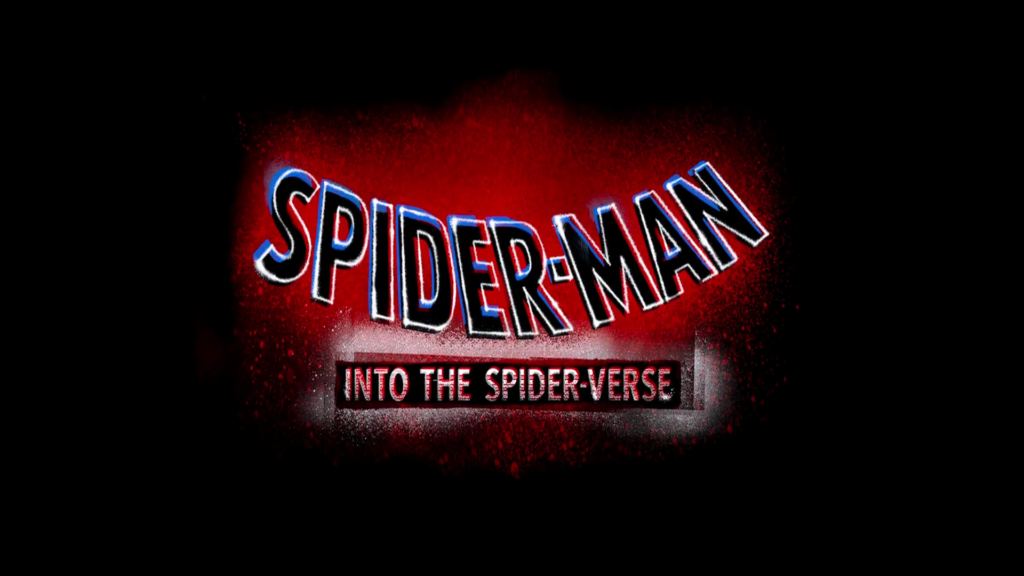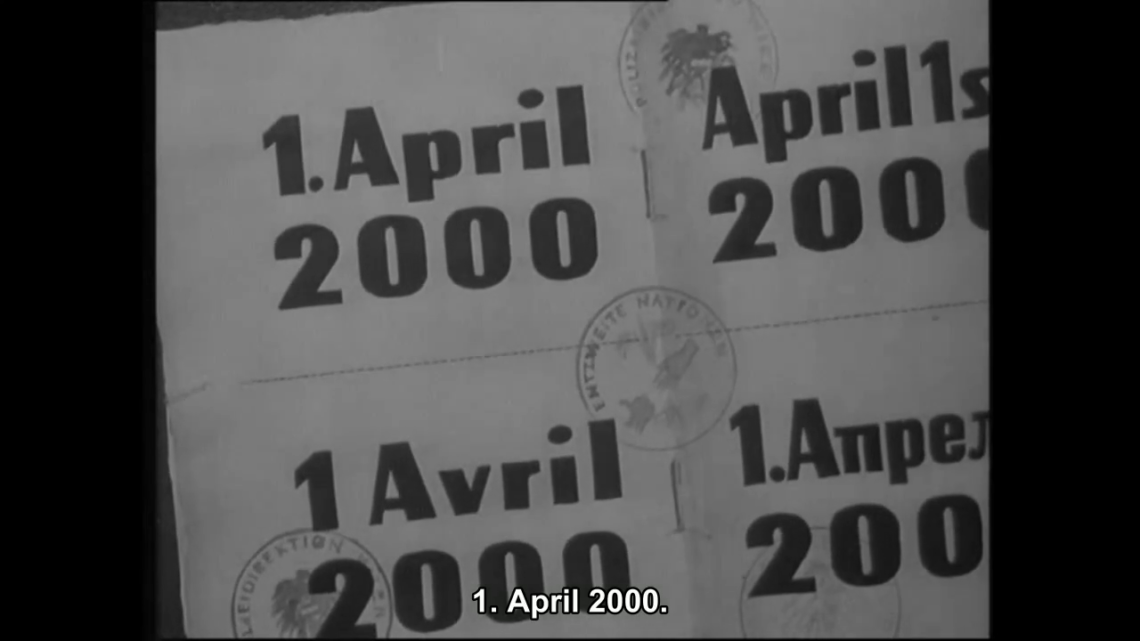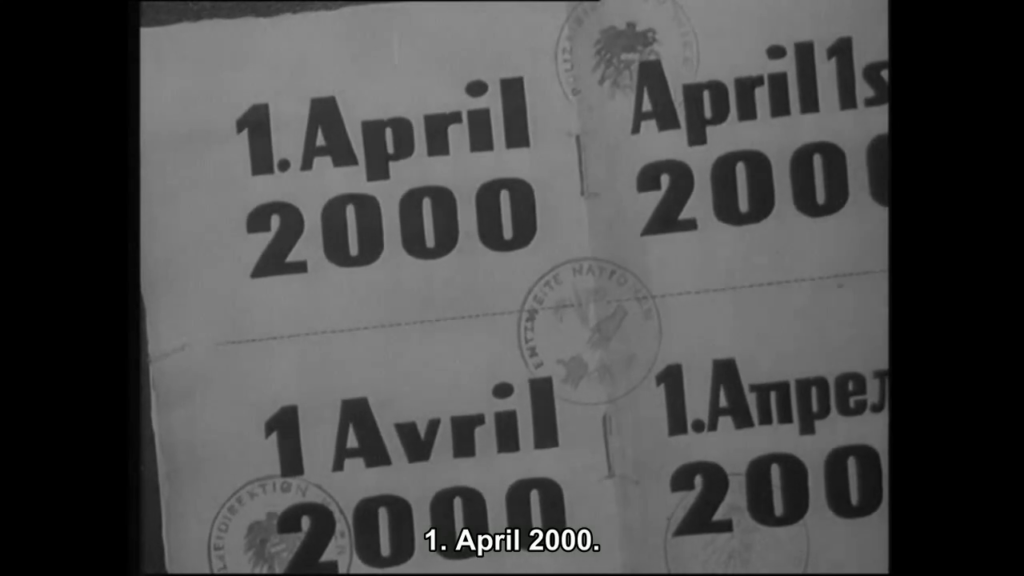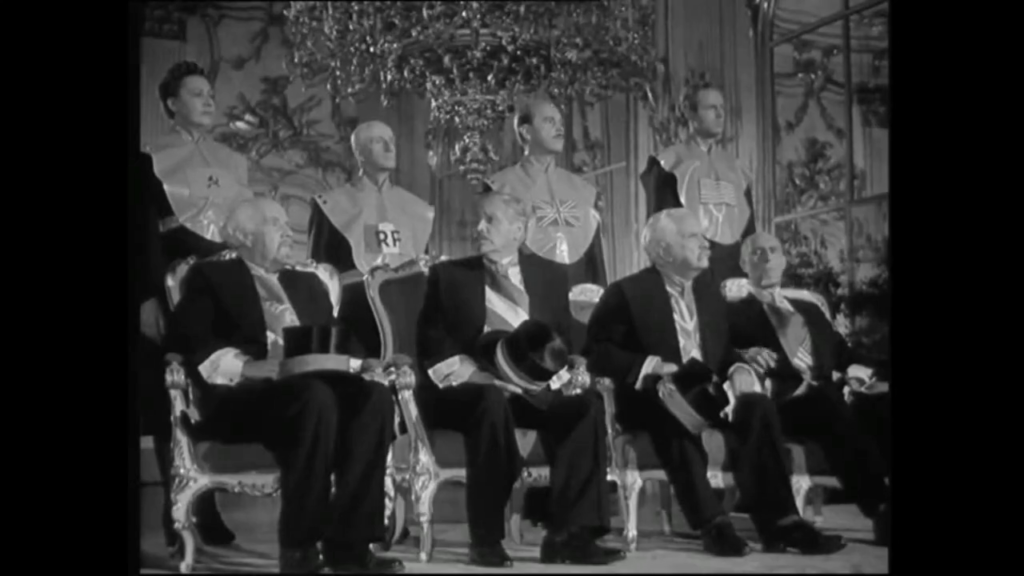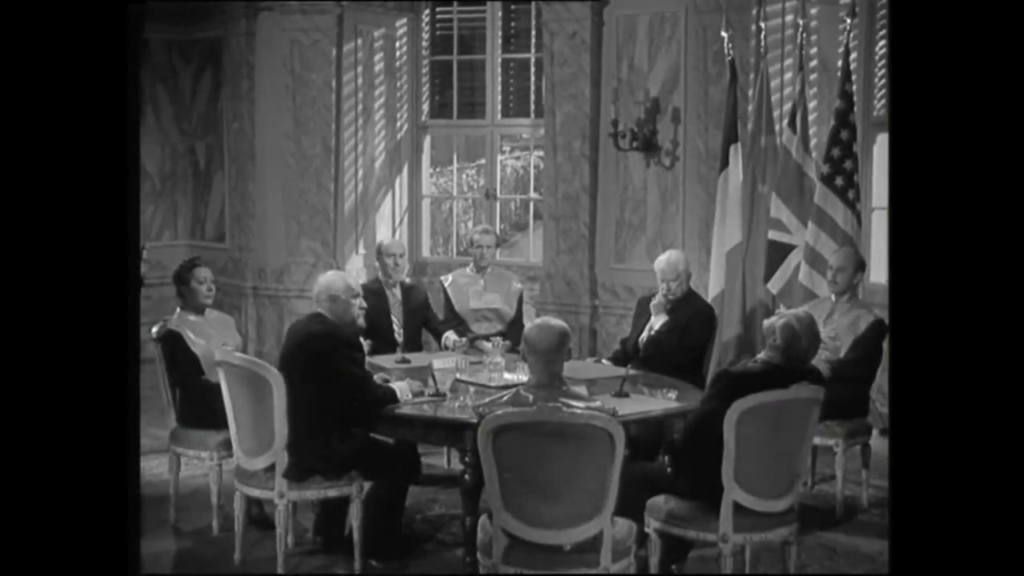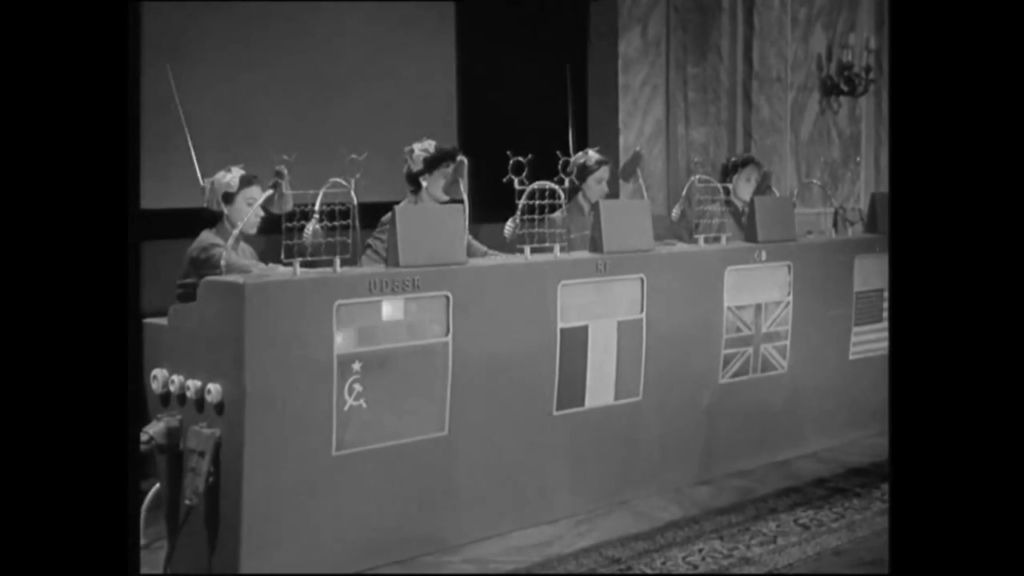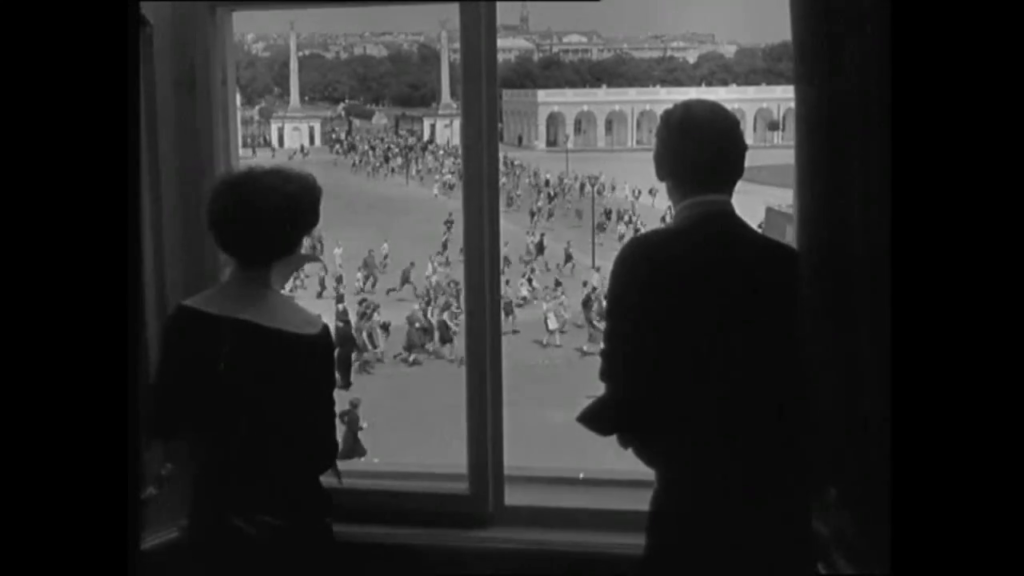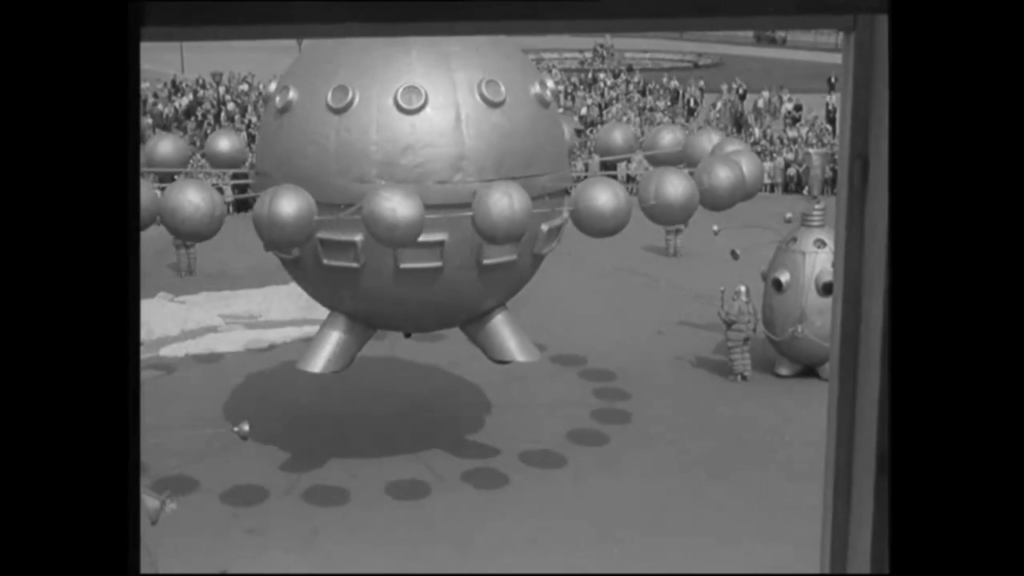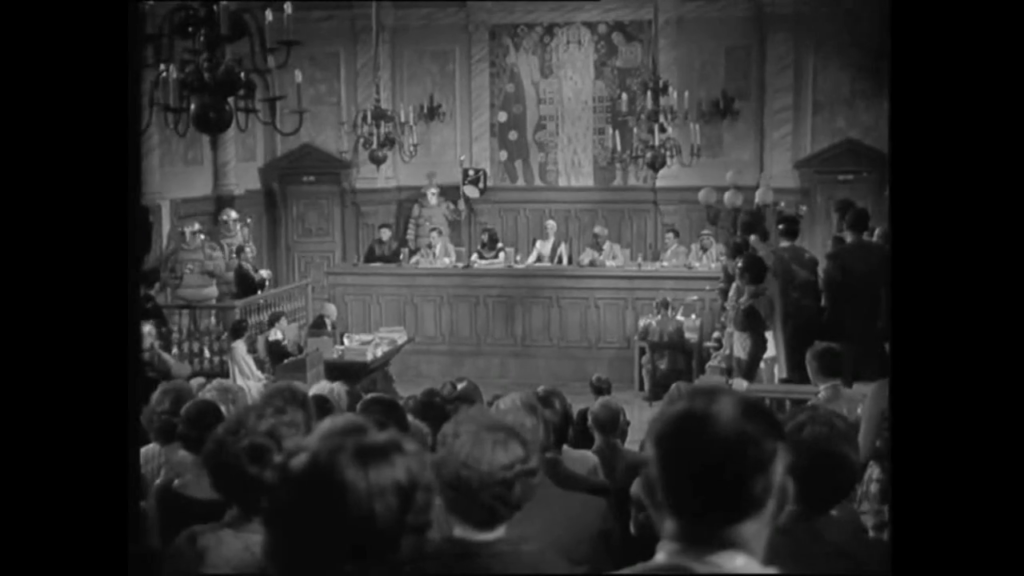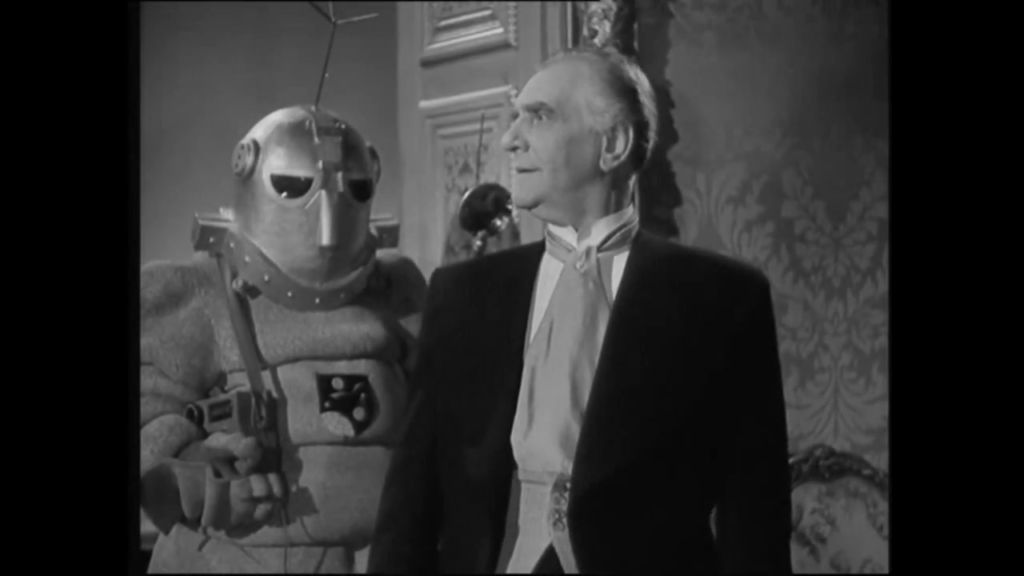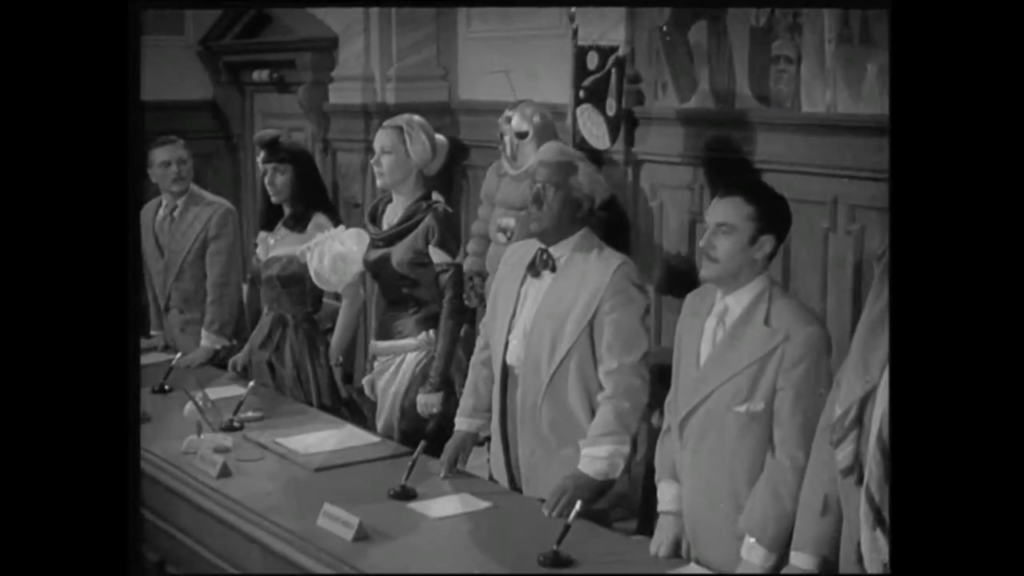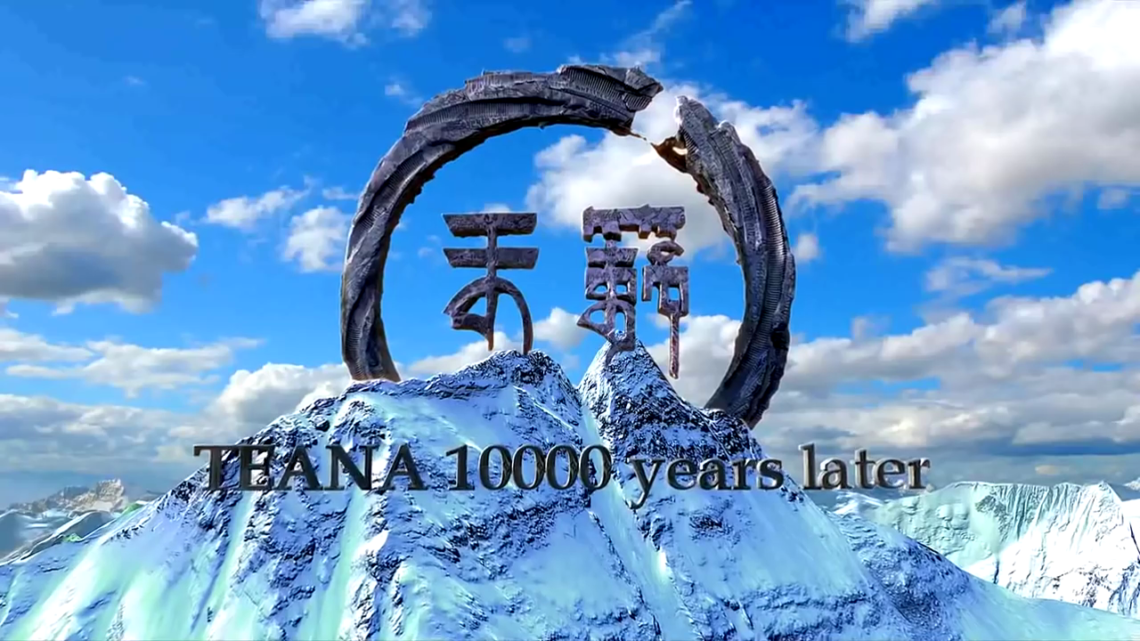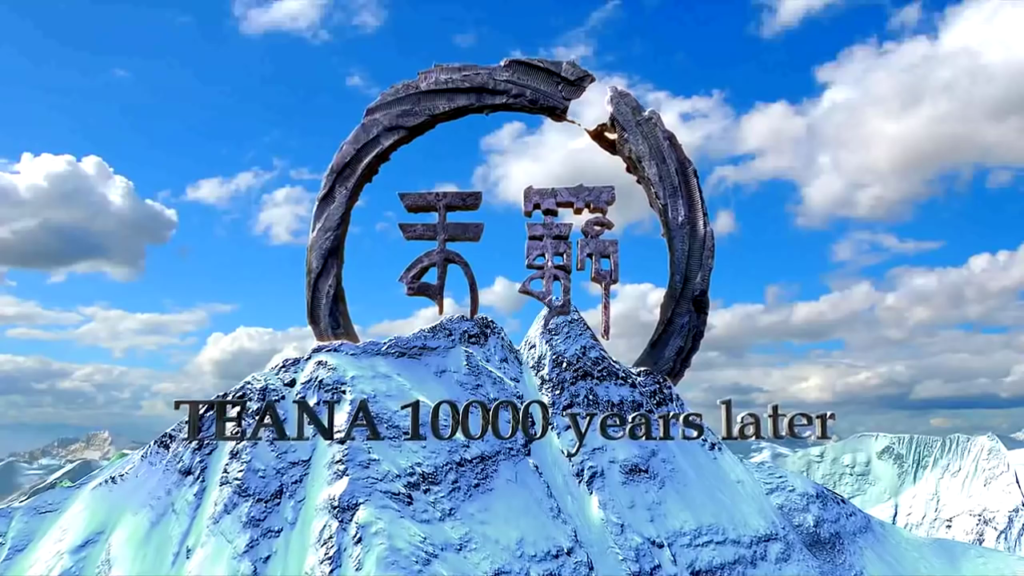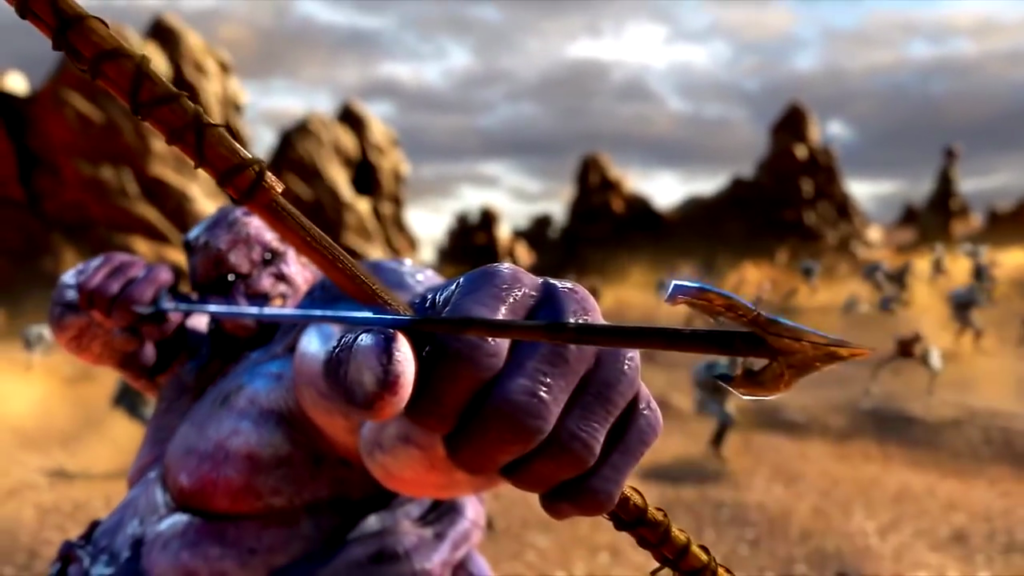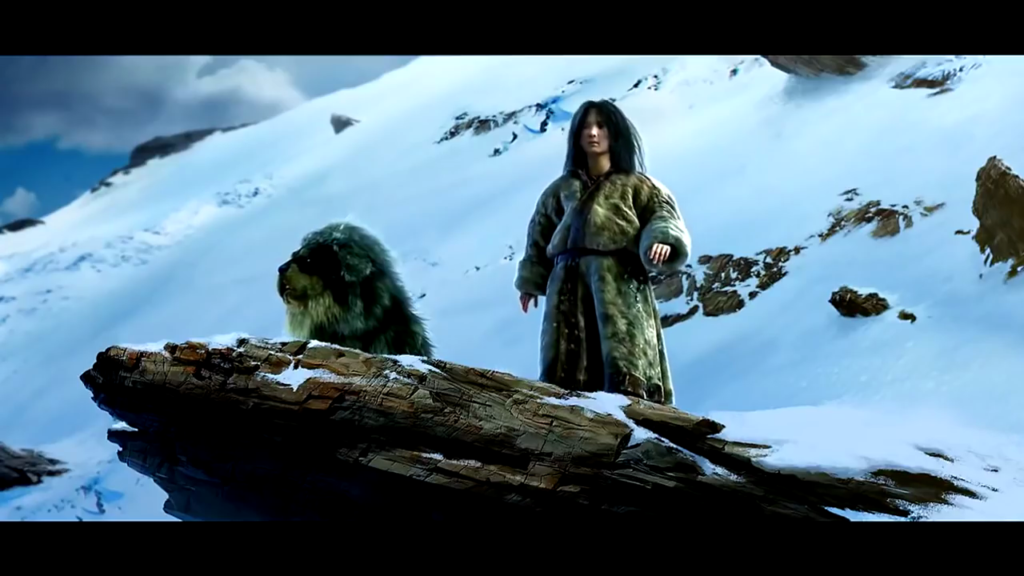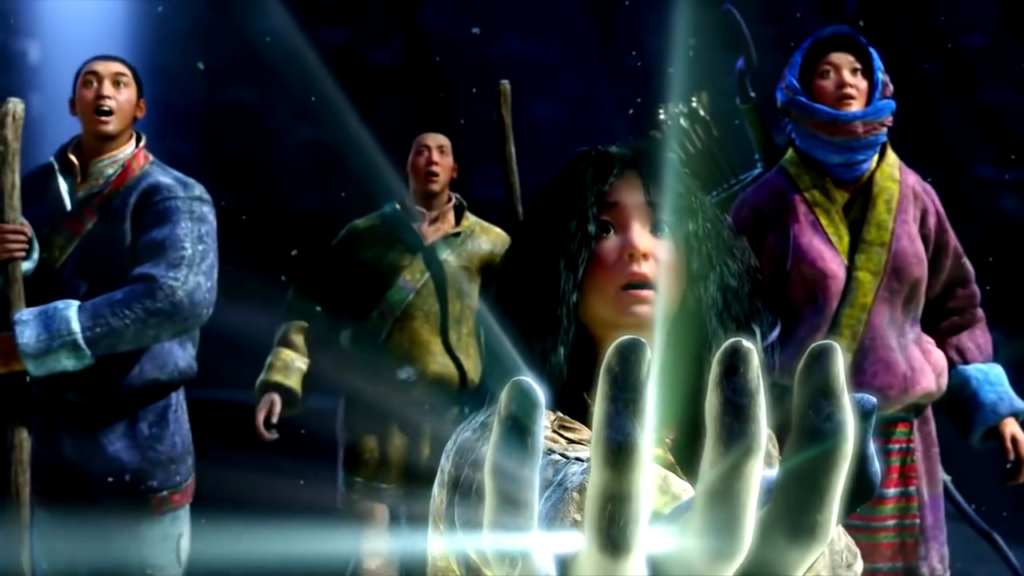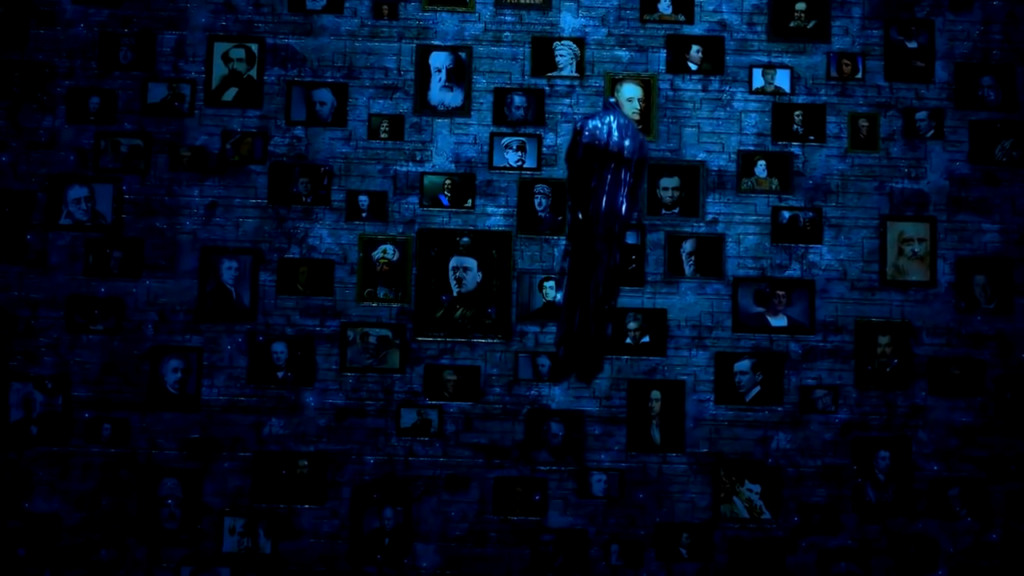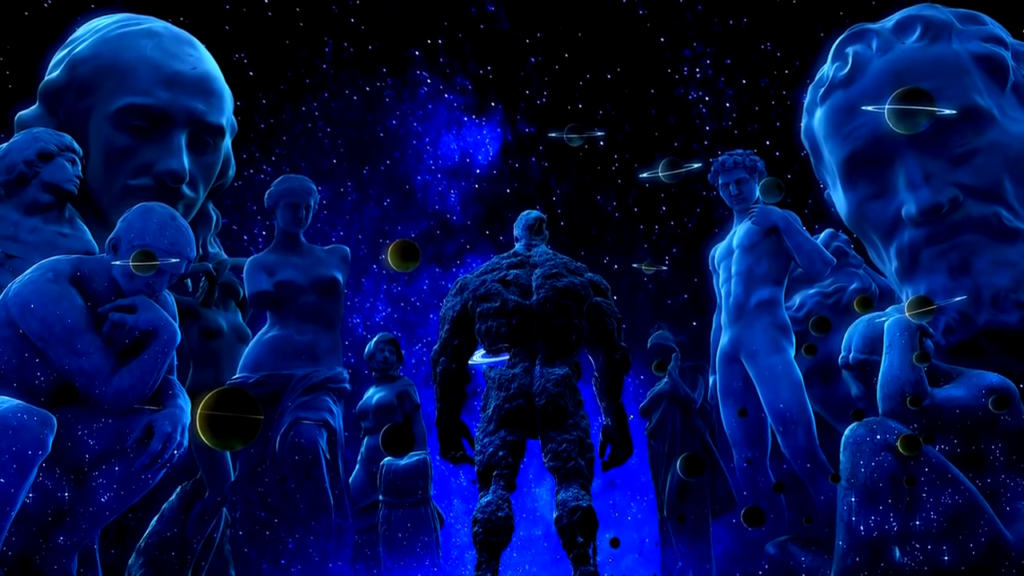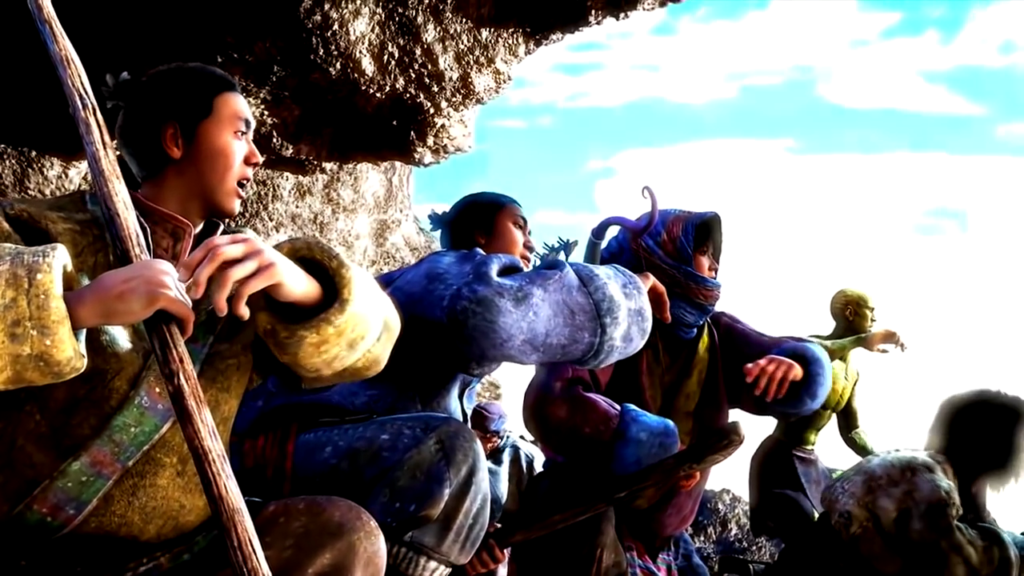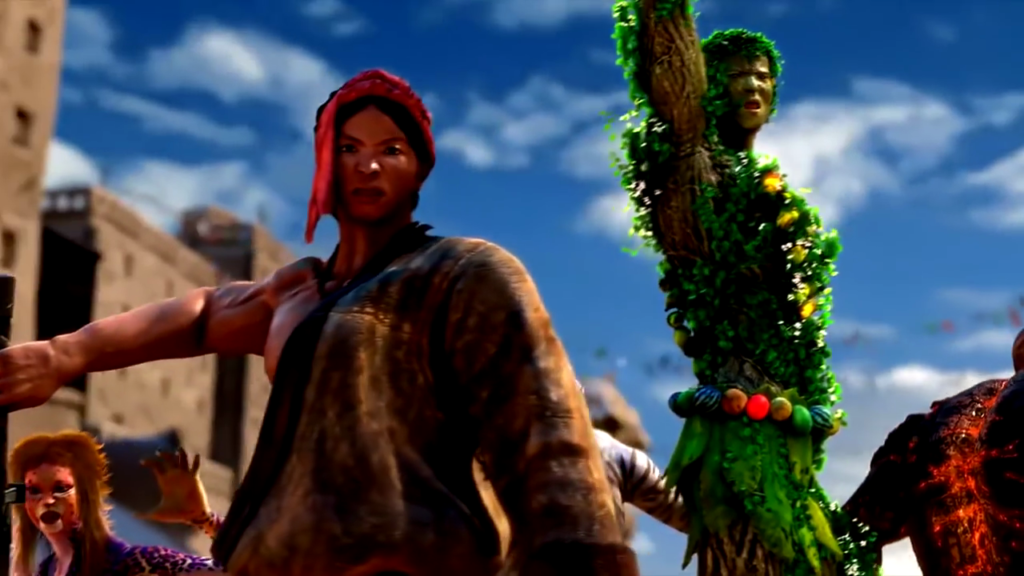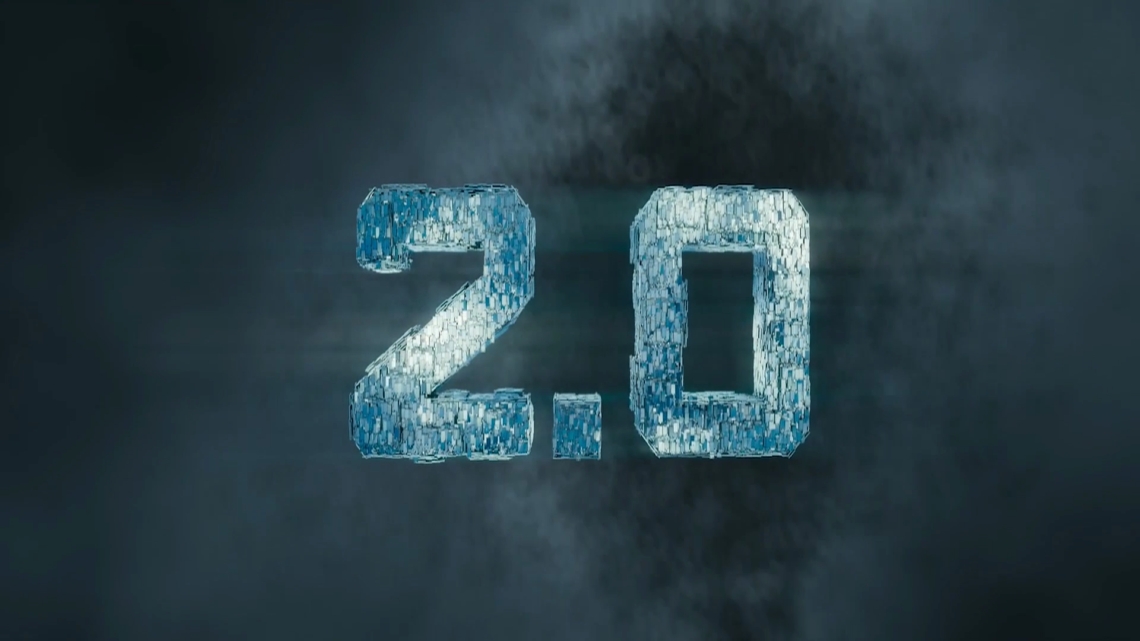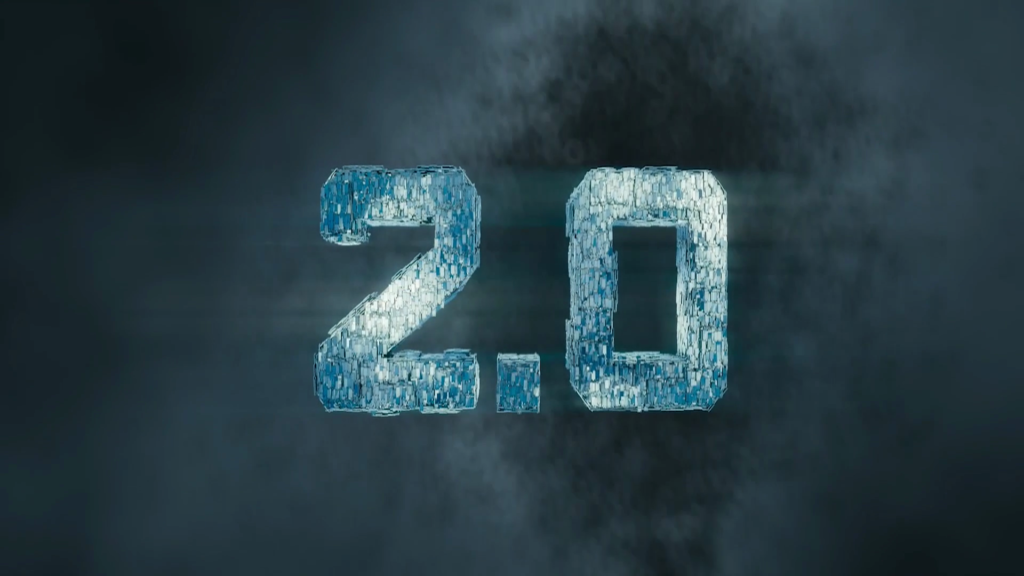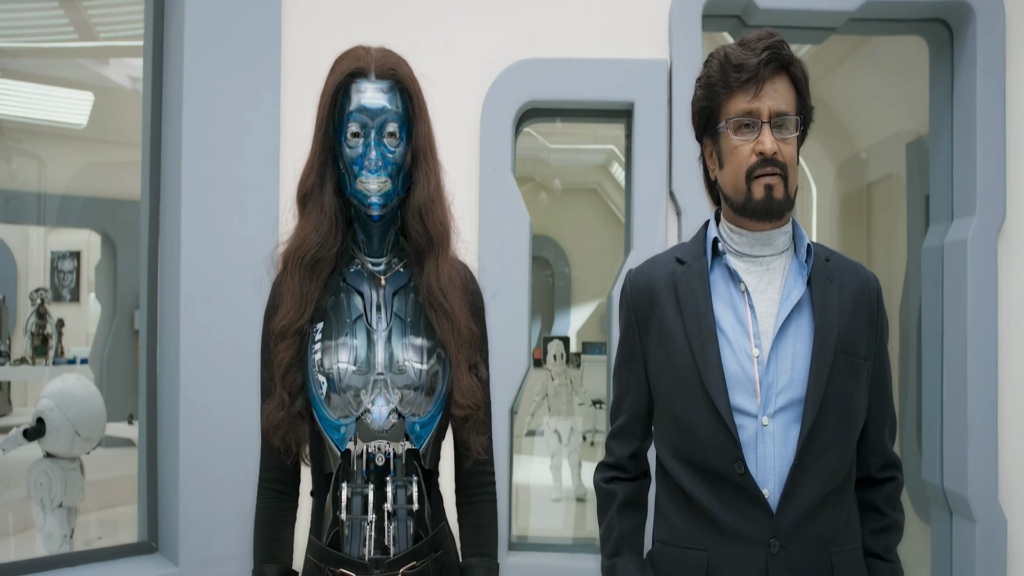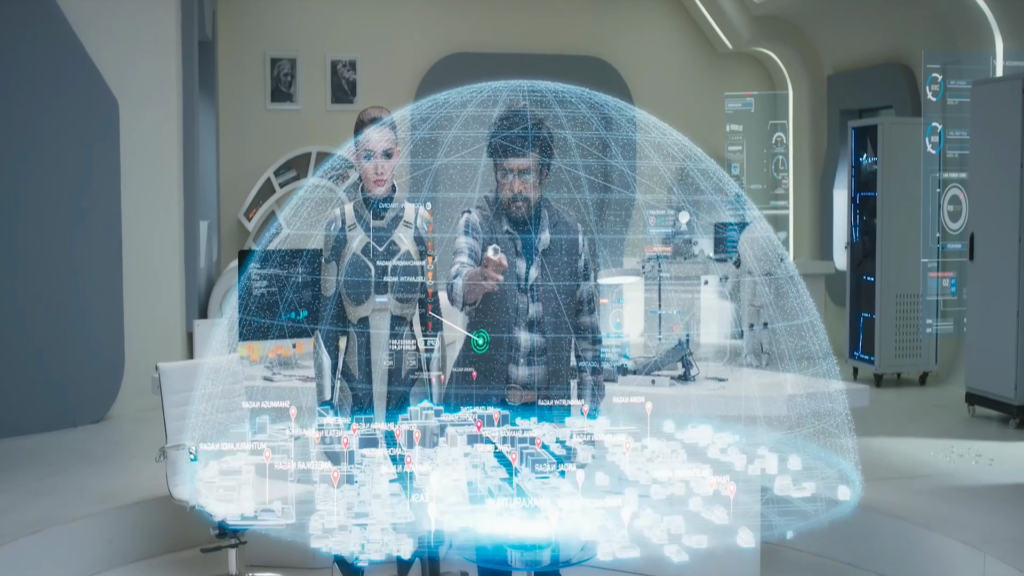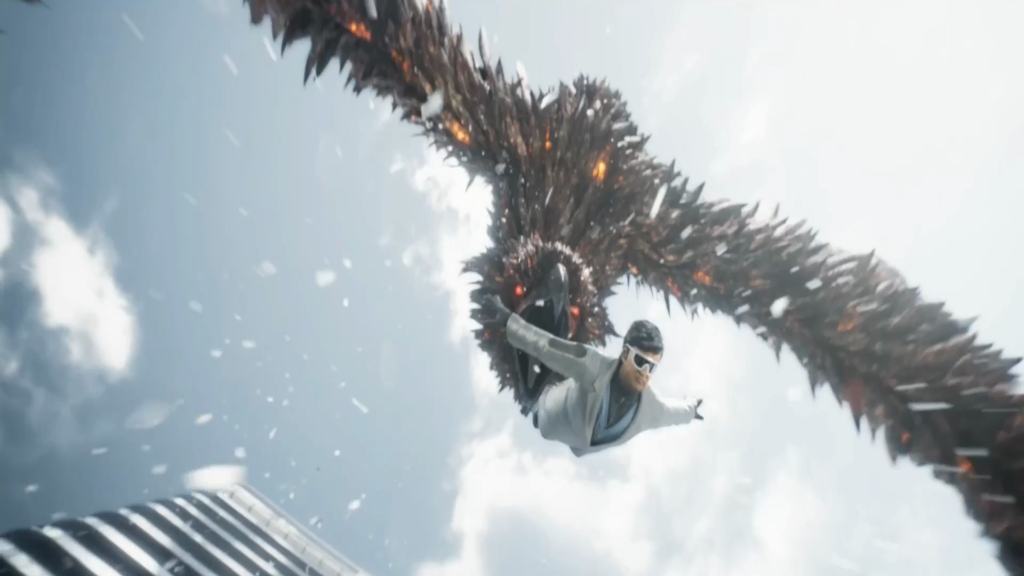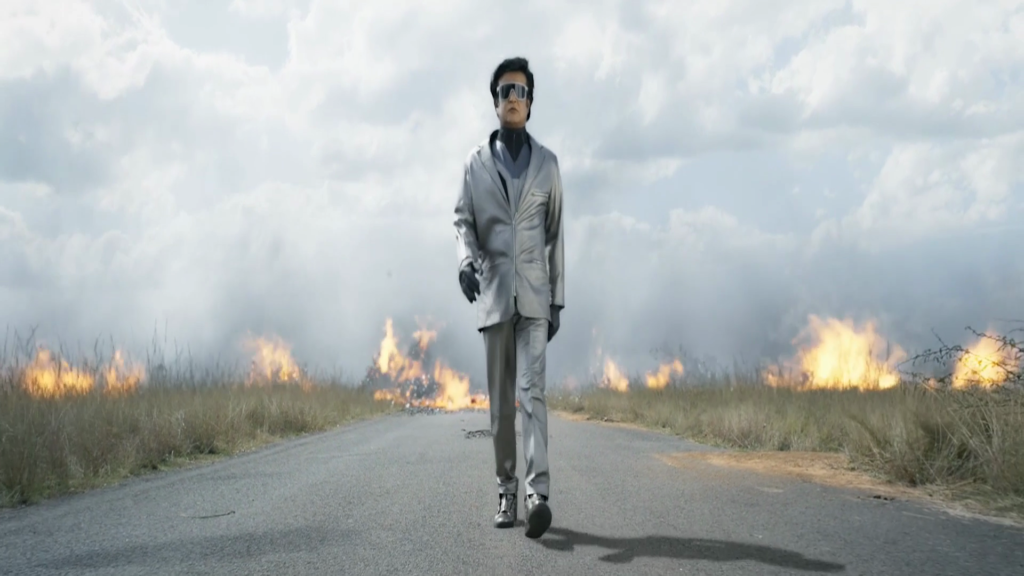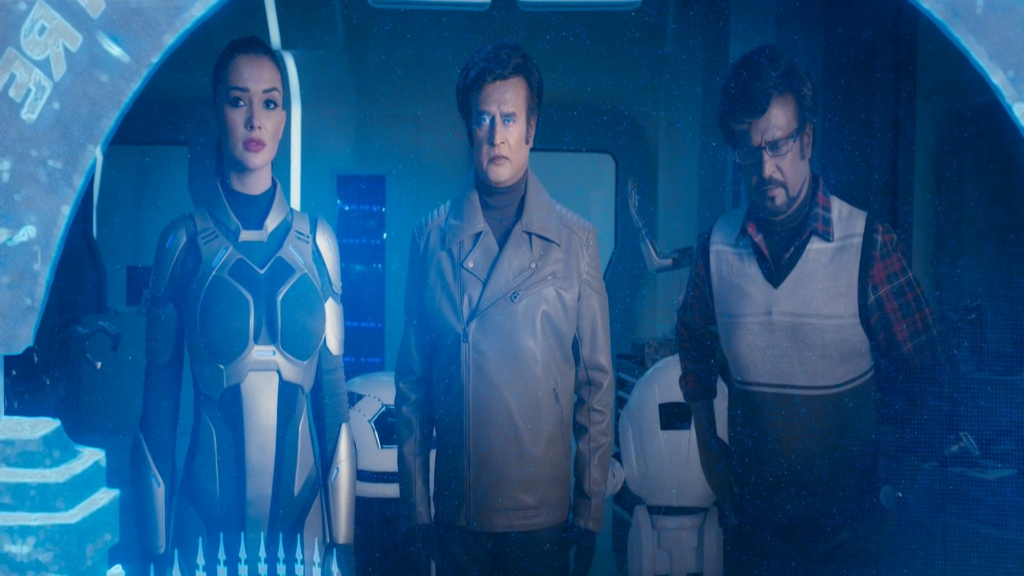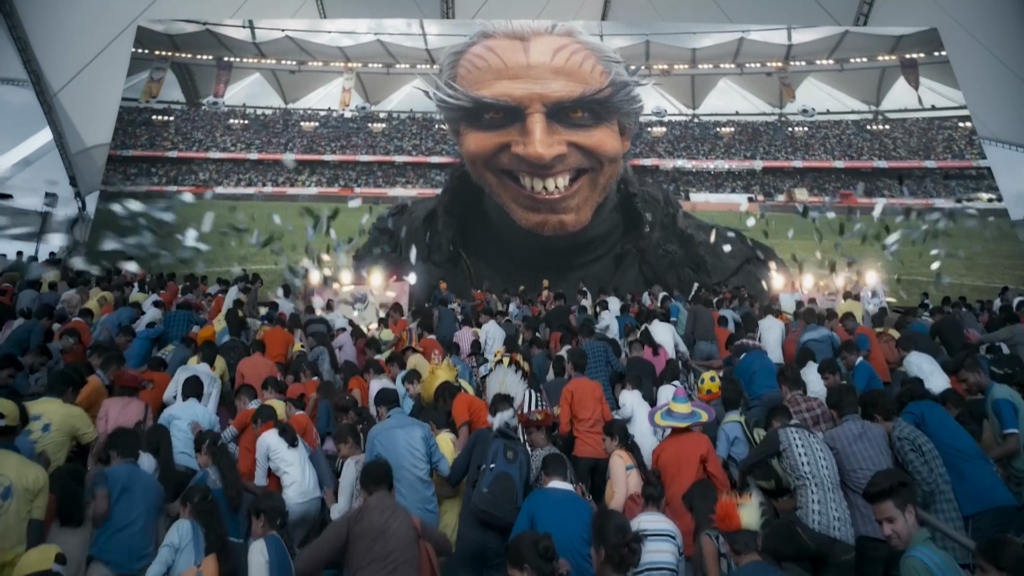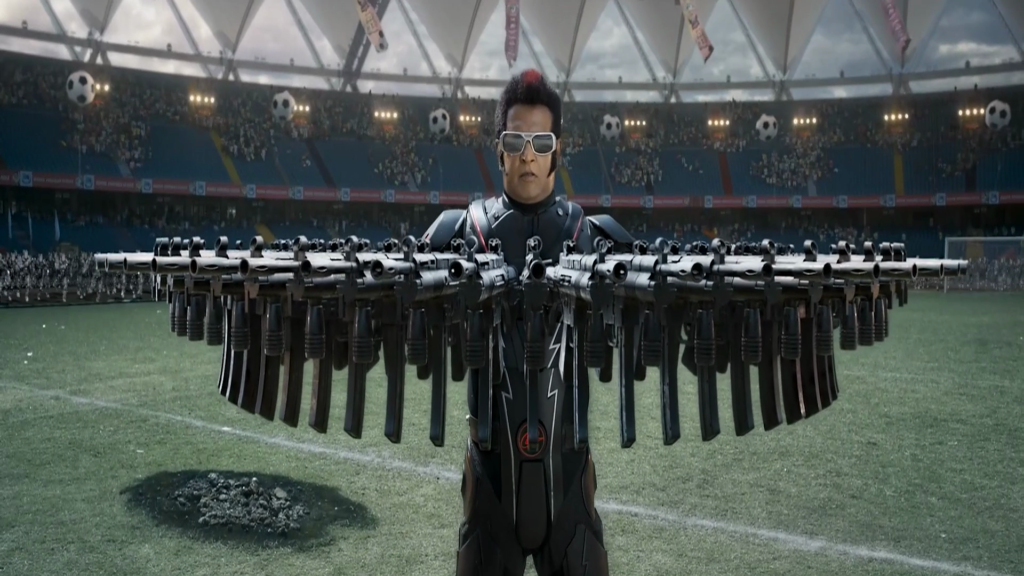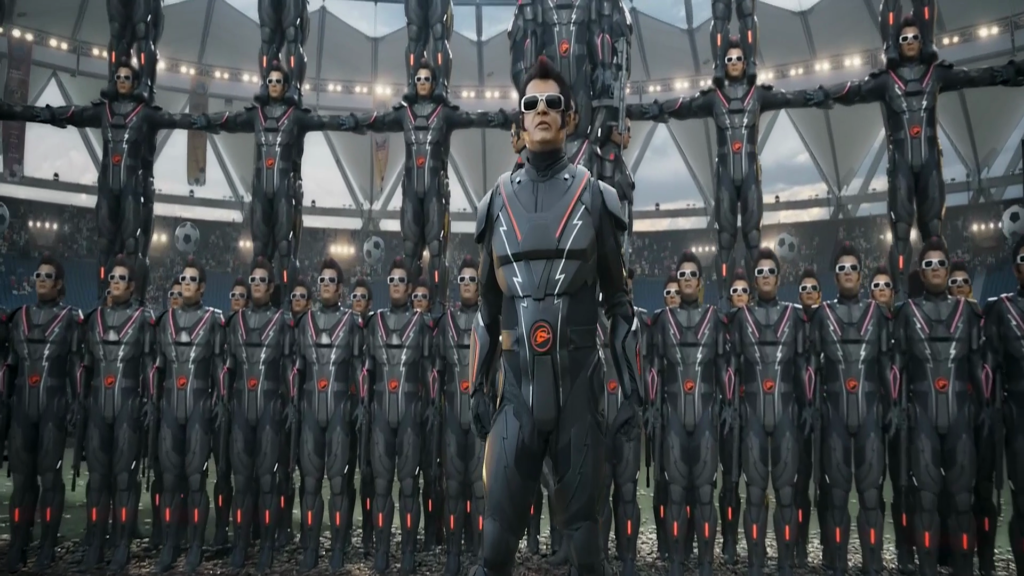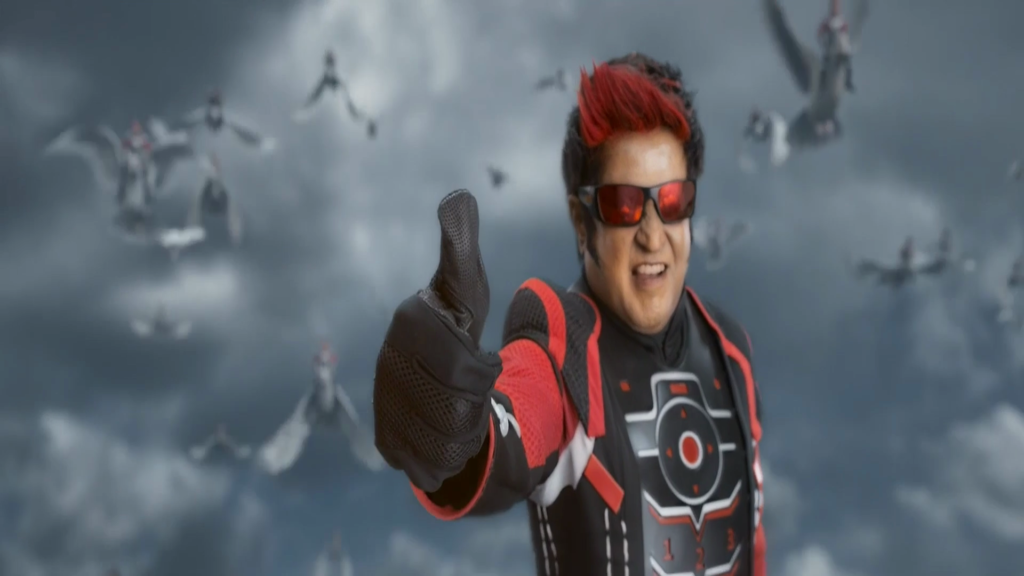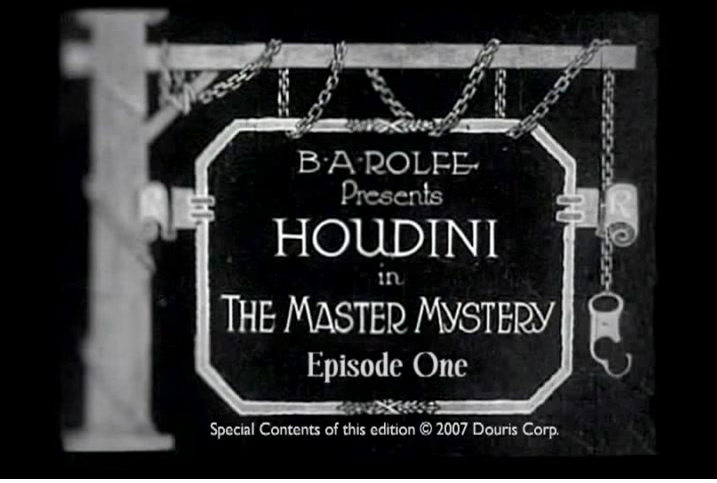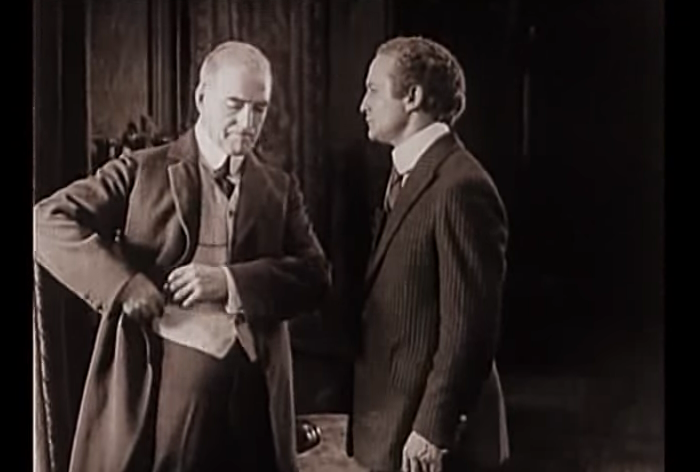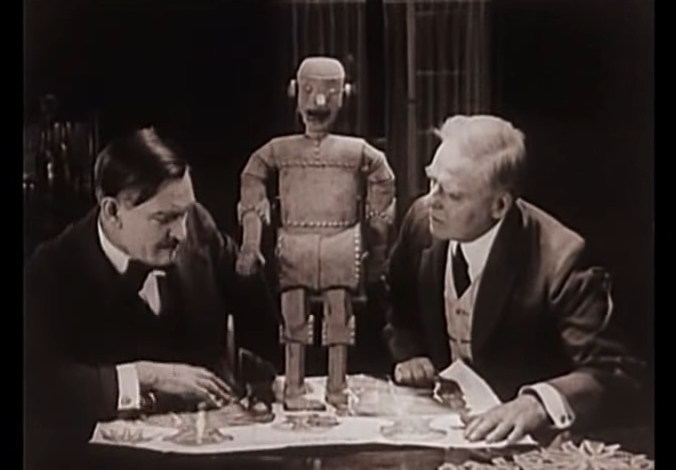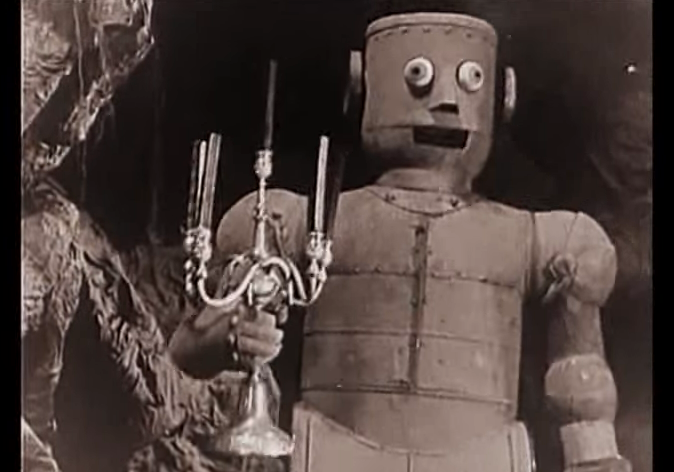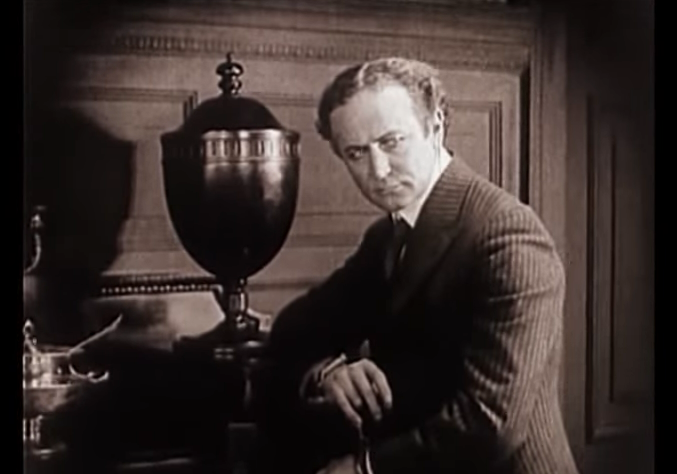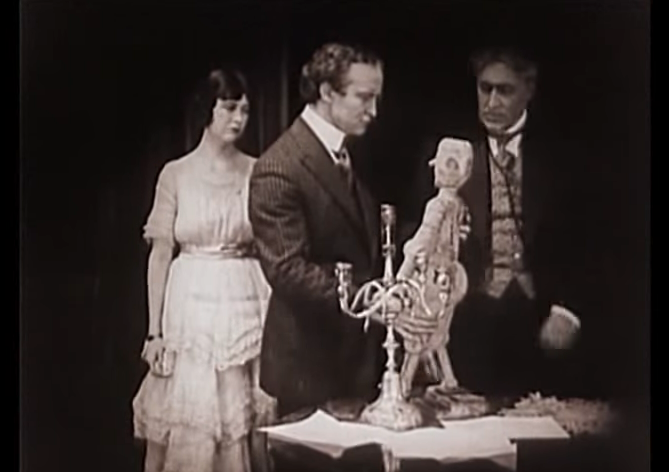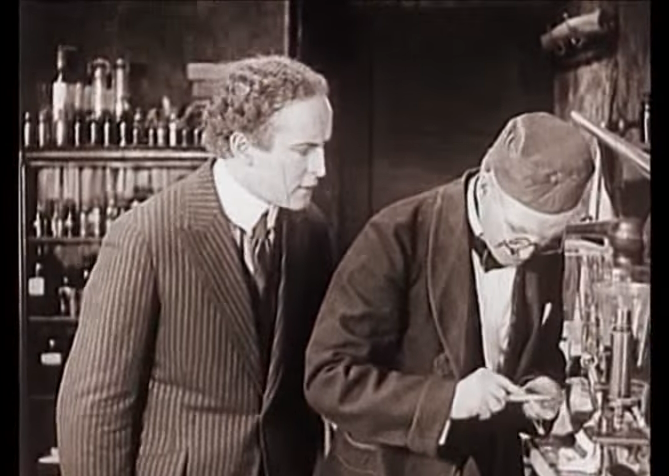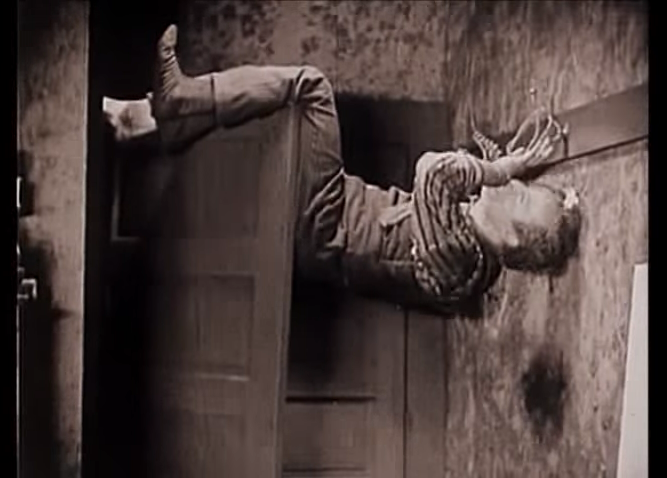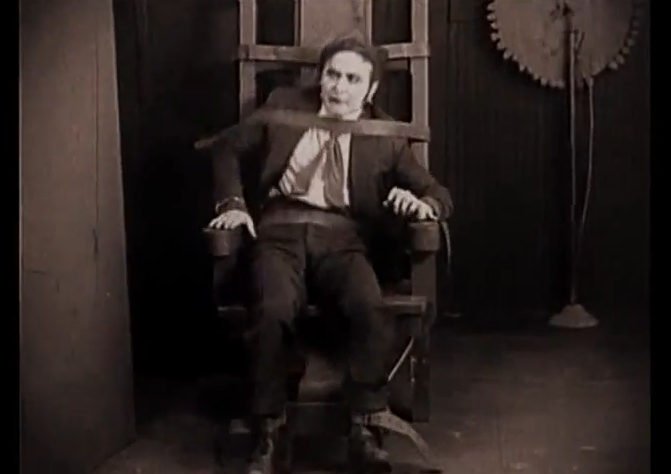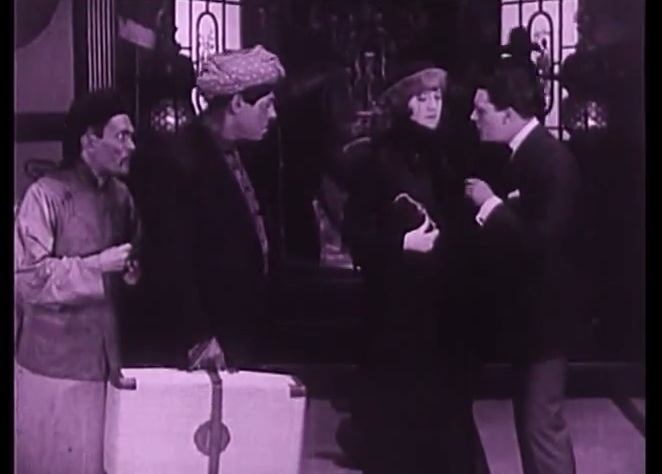-
#353: Spiderman: Into the Spider-verse (2018)
Spider-man: Into the Spider-verse (2018)
Film review #353
Director: Bob Persichetti, Peter Ramsey, Rodney Rothman
SYNOPSIS: Miles Morales is a typical teenager who is starting at a prestigious new school. While hanging out with his uncle Aaron, he is bitten by a radioactive spider and finds he has developed similar powers to Spider-man himself. He runs into Spider-man, who is trying to stop Kingpin from opening up a portal to other dimensions in order to bring back his family. This fight results in Spider-man being killed, and Miles is left as the only one who can stop Kingpin’s schemes. However, he soon finds out that he is, in fact, not alone, as various others who have inherited the powers of Spider-man have found themselves in Miles’ dimension when Kingpin activated his machine, and they must all team up to stop Kingpin and find their way back home…
THOUGHTS/ANALYSIS: Spider-man: Into the Spider-verse is a 2018 animated film. The film starts of by introducing Spider-man, or Peter Parker, as he has become the well known superhero everybody loves. The opening provides a quick recap of who Spider-man is, his origin story, and so on. If you’re watching the film, then you probably have a good idea of the various facets of Spider-man lore, but it helps set the scene nicely without spending too much time retreading the same well-worn ground of the origin story we all know. There are a few sly references thrown in to previous iterations of the Spider-man franchise, which offer something new to those who are familiar with it. The film starts properly by introducing Miles Morales, a teenager who is starting a prestigious new school thanks to winning a lottery and has to leave all his old friends behind to find he doesn’t quite fit in at his new school. While the film started off briefly introducing Peter Parker as Spider-Man, Miles Morales’ story is much less known, so the film takes a while to get going by introducing his character, his family and so on. His origin story isn’t so different from Peter’s (he gets bitten by a radioactive spider much the same), so the beginning does re-tread ground a little, but tries to intersperse the story with Miles’ unique position and as a character most people are unfamiliar with.
While trying to come to terms with his new powers, Miles encounters Spider-man, who is attempting to stop villain Kingpin from turning on a large machine which will open up a portal to other dimensions and cause catastrophic damage to New York City. Miles is entrusted with a memory drive that can shut down the machine, but before Spider-man can escape, he is caught and killed by Kingpin. This is quite a turn in the film, and it delves into the aftermath of Spider-man’s death and the effect on the people of the city. Miles also finds himself personally without anyone to teach him how to use and control his new powers, which adds to his problems. However, he soon runs into Peter Parker, or Spider-man: not the one that he saw killed, but one that was pulled from another dimension when Kingpin’s machine was activated. This Peter Parker is older and more jaded than the one Miles familiar with, and is set up as one that has lived through a large number of troubles, including breaking up with his wife/childhood sweetheart Mary Jane, which has left him a bit of a wreck. The Parker/Morales relationship that develops between the two is a cross between a father-son relationship and a ‘buddy cop’ kind of movie, where the experienced partner reluctantly takes on a rookie, and eventually learns to trust people again and so on. The film also plays around with Morales’ troubled relationship with his Dad and his more friendly relationship with his uncle, which all leads to developing a very complex web (pun intended) of relations and interactions. We are perhaps so familiar with superhero origin stories that they are rendered a little sterile and without impact, and Into the Spider-verse does a good job of playing with that. It also does it with a diverse cast and characters who you don’t see as much in superhero stories, which will also appeal to a different type of audience, while also providing enough substance for veterans of the franchise. Spider-man is often shown as a hero who works alone, with no side-kick or partners, so the film’s attempt to provide something new and also true to the formula provides a good variety of content and delves deep into the Spider-man mythology without it becoming too overwhelming.
The highlights of the film are numerous, but I’ll try and focus on the important ones. The Parker/Morales relationship as mentioned is portrayed very well, and while not the most original dynamic, it projects it into a superhero story that is usually told with only one hero. Praise definitely should also be given to the composition of the scenes as the dynamic perspectives and interspersed comic book effects really portray the kind of energy of a comic book come to life. The animation too is like nothing else attempted before, and captures high speed, action-packed scenes with a high amount of intensity and vibrant colours achieved through a technical expertise I can’t really fathom. Each character also has their own unique figure or animation style, and that helps contribute to the diversity of the film. Not only do a whole cast of Spider-man’s from various dimensions, but there’s also a number of different villains for them to face off against, and plenty of twists and turns in the story keep the energy flowing throughout the entire film.
There are a few negative points, but they are pretty minor, and don’t detract very much from the positives. While the Parker/Morales partnership is well developed, the other Spider-man characters aren’t explored and developed anywhere as near as much. They provide some variety, but most of their screen time is providing grounds for a specific joke or a bit of dialogue you would expect them to say, which flattens their character somewhat. There are also one or two times when the dialogue isn’t clear over the songs they play, but these are all minor moments and not a huge problem. The soundtrack itself is not particularly appealing to me (not a criticism because it is not aimed at me), but some of the songs are a bit more wide appeal.
Overall, Spider-Man: Into the Spider-Verse tells a familiar story in the Spider-Man universe, but does it with new characters and old, cramming in references to all other iterations of the franchise while providing a fresh take on some of those familiar elements. The animation and composition is strong and displays a technical competency while also putting it to good use developing a colourful and vibrant aesthetic. The action is fast and intense, the humour is silly, appealing, and the serious moments have distinct impact. There are some elements of the film that are underdeveloped somewhat, but because the film is so filled with characters and content that is to be expected. Into the Spider-Verse is a film that will appeal to and entertain those who are familiar with all the Spider-Man iterations and those who are new to the franchise.
Also; this film probably has the best post-credits scene ever.
-
#352 – 1. April 2000
1. April 2000 (1952)
Film review #352
Director: Wolfgang Liebeneiner
SYNOPSIS: In the year 2000, the newly elected Austrian Prime Minister declares that the country will no longer be making payments to the World Union and declares its independence of the Allied forces that have overseen it after the end of the second world war. This brings down the wrath of the World Union, whose president sees them as a threat to world peace and arrives in Austria in order to put the Austrian Prime Minister on trial that very crime. He defends himself by showing the World Union that he is no threat, and that the rich cultural history of Austria is a legacy of peace and unity.
THOUGHTS/ANALYSIS: 1. April 2000 is a 1952 Austrian sci-fi political satire film.The film takes place – as the title suggests – in the year 2000, some forty eight years after the film was released, and sets the scene as a possible future based on the (then) current situation in the world following the second world war. The backstory being that Austria, having been a part of the alliance that lost the war, were subject to oversight from the winning alliance and had to make reparations to them. The film opens up with a newly elected Austrian prime minister announcing that he is refusing to pay anymore reparations to the World Union (a not-so-subtle parody of the United Nations), and is declaring Austria independent of the allied powers of the U.S., U.K., Germany and the USSR and their oversight. The citizens are overjoyed at this, but this act of rebellion does not go unnoticed at the World Union, and they have sent their troops and president to “maintain peace.” They put the prime minister on trial, accused of disrupting world peace, and he must defend himself and his country by showing the World Union that they simply wish to be free, and present no threat. This is done through showing the various achievements in Austria throughout history, and its value in the larger world. The film goes through the various stages of this trial, with the prime minister showing evidence that acts as a historical lesson for the World Union and the viewer. The message of the film is rather plain to see, even if it is set in the future: that there is no need for the allied powers to occupy and oversee Austria to prevent another world war, and it is a country that simply needs to be free…and this is as true in 1952 as it is in the speculative year 2000. All the arguments made in the film could be made for the time that the film was made, but the setting of the future shows that there could really be no end to the reparations and oversight, and there is no ideal time at which it should be stopped, so it should be ceased immediately. The film’s strength lies in its informative message, while still managing to be entertaining, with an interesting cast of characters, and the almost haphazard approach of the prime minister creating his defence with no time to plan further shows that their is no grand scheme or plan in his head, just the simple idea of freedom for his country.
The setting of the year 2000 is a future filled with super fast rockets for travel, laser guns and ridiculous headgear for TV camera crews…but apart from that nothing seems vastly different in this future. This may be because Austria cannot afford any new technological advances under its oversight, or simply that the film is focused more on showing Austria’s past, and so it being too futuristic would distract from that. Either way, these futuristic elements are shown to do nothing to fix the basic problems that the film is trying to address. For example, when the World Union’s rocket is heading for Austria with its troops, they accidentally go to Australia instead, which shows their lack of consideration or interest in those countries it is leaving behind technologically, as well as a typical bureaucratic blunder people can make. The effects for the spaceships are quite well done, as they land around Austria’s cultural landmarks it gives it a real sense of authenticity. On the other hand, an element that hasn’t aged well at all is having all the different representatives of the countries of the world (black, Arab, Chinese) all being portrayed by white actors, which doesn’t really look good.
The satirical nature of the film means that a lot of the content is not too be taken too seriously, nevertheless there is a serious message that the Austrian government (who funded the film) wanted to project: that they were a legitimate country with a rich history, and should be taken seriously. Some of the plans of the prime minister include putting on plays and composing songs to persuade the World Union members to give Austria its independence, all of which are executed in a comedic manner that you can’t really take too seriously. The plot does go all over the place, and the ending makes the whole trial redundant anyway, which further emphasises the satirical, comedic aspect. Overall, 1. April 2000 is an interesting film that is informative, satirical and is a protest at the then current state of affairs through a science-fiction lens. While there is a serious message, it is wrapped up in theatrics, silly looking futuristic technology and ad-hoc schemes that are entertaining to watch while also not diluting the historical figures and events that it shows. Some of the dialogue and characters are outdated, and the story feels very loose in places, but again, overall it is an interesting look at a time where the world was rebuilding, and how the future might unfold without anything really changing.
-
#351 – 10000 Years Later (2015)
10000 Years Later (2015)
Film review #351
Director: Li Yi
SYNOPSIS: Ten thousand years after advanced civilisation was wiped out and the world reverted to a pre-technological state, Joma and Yalayam of the Ballad tribe are travelling the western region to tell the tale of the fall of civilisation. Unfortunately, Wugreb, who once tried to steal the ancient powers to rule the world, has returned, and Joma alongside her new friends must find a way to stop Wu before he releases the ancient civilisation’s power back onto the world, all controlled by him…
THOUGHTS/ANALYSIS: 10000 Years Later is a 2015 Chinese animated film. It is a mix of post-apocalypse, science-fiction and fantasy elements, as it is set (as the title suggests) 10000 years after civilisation suffered a catastrophe that sealed away all of its advanced technology and left the world in a pre-technological state. The world is now separated into various tribes, which include anthropomorphic animals and various mutations brought about by the catastrophe. Joma and Yalayam are from the Ballad tribe, who wander through the western region telling the story of the fall of the ancient civilisation to the other tribes. They also tell the story of Wugreb, who once tried to steal the ancient technology that is sealed away and rule the world with it, warning that anyone who tries to do the same will be met with the same fate. However, Wugreb (or Devil Wu, as he is also known) has returned, and is attempting to once again take the technology of the ancient civilisation for his own. The story relies a lot on this extensive world-building, and how the world has changed since the fall of civilisation as we know it. Sometimes it is easy to follow, but at some points it gets overly complicated, and for a film that is just over ninety minutes long, the explanations and exposition it gives do seem a little excessive. Nevertheless, it is an interesting world that is built, and the variety of locations and characters give it a unique sense of life and vibrancy. The people refer to famous people throughout history (Einstein, Beethoven etc.) as the “Gods” of the old world, and it is an interesting way to interpret history’s most pivotal figures. There are these odd scenes which play out quite nicely, but they are mostly used to explain the state of the world, and when the film returns to the main characters, they seem much less interesting.
Joma goes to see an oracle, who tells her that she is the only one who can stop Wu, and she must go to Kuger, the tomb where Wu was imprisoned, to stop him. Along the way Joma is joined by a cast of characters from different tribes who all inject their own personalities into the film. The film very much has a Lord of the Rings feel to it, with the group travelling to their destination to stop the oncoming evil, and all the perils that they encounter. But again, there’s a lot of backstory and exposition that disrupts the flow of the film, and you really have to focus and pay attention to follow what is going on. The characters on the whole, though, are distinct enough to be able to follow, but for all the explaining and exposition, don’t really do much, so it’s hard to get to know them as characters. At once point the film deals with the meeting of the Gods which I can’t really make sense of; and whether they are actual Gods or not is anyone’s guess. Joma as the main character is also a bit bland and uninteresting: even though she is marked as the chosen one, she doesn’t really have any defining traits or character defining moments that make her stand out, and she is often very passive to the events of the film. The ending of the film also does little to elucidate the significance of Joma’s role, and makes little sense. The designs of some of the villains, with their multiple faces or limbs and other bizarre features are both scary and creative, and the somewhat imperfect animation actually helps exemplify their grotesqueness.
This film is entirely CG animated, and for the most part it creates a world that has immense scale, colourful diversity and interesting locales. We see ruined versions of recognisable cities such as New York and Sydney, which add some interesting shots and perspective on the story. There are some moments when the animation gets a bit clunky, and facial expressions and movements sometimes look a little stifled or flat, but otherwise it doesn’t distract too much from the film. It’s not cutting edge in terms of its graphics, but it is passable for a kids film. Apart from the Lord of the Rings influence mentioned above, there is also a certain amount of ‘inspiration’ taken from the Marvel Avengers films. When I say inspiration, that often becomes blatant copying, such as the five stones that Joma carries containing seeds from across the western region clearly being based on the “infinity stones” in the Marvel universe, and there is a shot which copies exactly the iconic shot from the 2012 Avengers film of all the superheroes together for the first time on the streets of New York City. All this copying does cheapen the film’s overall image, but being a Chinese film, where these films would not have seen much of a release, the audience probably won’t even know they are being copied. The editing of the film also feels quite choppy in parts, such as when the big final battle begins, the enemy soldiers slowly emerge, and it instantly cuts to the whole army appearing, which really interrupts the flow of the film (though it probably saves on the animation costs).
One more significant aspect of the film is the amount of gore and violence throughout. I can’t really tell what the ideal age range is for this film: it seems mostly kid-oriented, but even from the opening, there are people being sliced up, bloody battles with people being cut in half and stabbed, and so on. I’m not sure what the standards are for Chinese cinema in terms of violence in children’s films, but it definitely wouldn’t be a child-friendly film in the west. Overall, 10000 Years Later creates an interesting and colourful world with a rich back-story, but the focus of the story and its main characters are often lost in the overly complex world and narrative that can be difficult to follow. The character designs are creative and unique, but again the personalities of the main characters are dull by comparison, and often get lost in the grand scale of the world. The large-scale battles are impressive and entertaining, but it is obvious that they are copying from the Marvel films and Lord of the Rings, which obviously do them much better, and make the film feel like a cheap imitation…which, let’s be honest, is exactly what it is. There are some emotional moments (there’s a scene right at the start which pulls you in instantly…you’ll know it if you see it), and the gratuitous use of gore and violence really gives weight to the fighting scenes, but ultimately there is no real pay-off to investing in this world, and it offers very little that is unique.
-
#350 – 2.0 (2018)
2.0 (2018)
Film review #350
Director: Shankar
SYNOPSIS: Dr. Vaseegaran, an expert in robotics and artificial intelligence has developed a new robot named Nila, after his older robot Chitti went on a murderous rampage and was disassembled. When everyone’s mobile phones start flying away of their own accord, it turns out to be the work of the spirit of Pakshi Rajan, who is using them to stop their overuse from killing birds. With no way to stop him, Vaseegaran suggests reactivating Chitti, as he is the only one strong enough to defeat this new menace…
THOUGHTS/ANALYSIS: 2.0 is a 2018 Indian science fiction film and the sequel to the 2010 film Robot. The film opens with Dr. Vaseegaran introducing his newest robot Nila to a group of students. Shortly thereafter, people’s mobile phones throughout the city begin flying away of their own accord. Without these phones, the city is in a state of chaos, and attempts to bring in new phones are met with suspicious accidents. The phones then combine to take the form of a giant bird, which causes more chaos by uprooting signal towers. Vaseegaran suggests to the government to reactivate Chitti, but his murderous rampage that was the result of an upgrade means they are reluctant to do so. When the military fails to resolve the situation, the government then gives Vaseegaran permission to reactivate Chitti to counteract the mobile menace. The plot of the film is fairly robust, with a good amount of time dedicated to all the characters, with some decent set pieces that give the action scenes the space they need to stand out, as well as a decent amount of character development.
One issue that arises with the story is the pacing and it’s organisation: some scenes go on for too long and put the film into a bit of a slump that make it lose focus through its inconsistency. The big example is when Chitti encounters Rajan (or his energy spirit…thing) and asks what his motivation is. This leads to a twenty minute flashback essentially telling his life story. I think the aim is to get the viewer to empathise with his message about how mobile phone signals are killing the birds, and will ultimately endanger our own existence, but this could have been done in a much more interesting and provoking way other than this biographical picture of a villain to make us feel sorry for him. Rajan’s kill count in this film is pretty high, and is portrayed with a very evil look, so ultimately he is being played as a straight, typical villain that doesn’t really need this backstory. His whole life being centred around birds from the moment of his birth onwards also makes him seem like a very one-dimensional character. The rest of the cast are given just the right amount of development, and the performances are all pretty good, with characters from a number of different perspectives on the events that are transpiring. One character that doesn’t serve much use is Dhina Bohra, the son of one of the villains who was killed in the first film. He serves as a good reminder of Chitti’s legacy in the first part of the film, but his part gets muddled and loses it’s way as the film progresses.
The message of the film concerning the effect of mobile phone signals on birds is not a subtle one, and I have absolutely no idea how much of it is true or not, which makes the message even more confusing. The film does try to explain how and why everything is working, even when it probably doesn’t need to. The explanation of Rajan’s spirit being a 5th form of universal energy that is binding together the mobile phones is needlessly complicated, but probably should be commended for its effort in elaborating on details. Any criticism of the subtlety of the film’s message should also be balanced out by saying this is not a subtle film in any other regard either. Like it’s predecessor, 2.0′s biggest strength is its over-the-top action sequences that defy reality, logic and sense. Again, this contrast with the exasperating exposition of the antagonist give the film a very uneven feel in places. Nevertheless, the action itself is pretty solid, with some implausible stunts and plenty of destruction. The fights are also pretty varied, with the first fight of Chitti after reactivation showing off Chitti’s strengths, then after Rajan possesses Vaseegaran’s body, Chitti cannot defeat Rajan because it would also harm Vaseegaran, and conflict with his programming against harming another human. With this in mind, Nila activates Chitti 2.0, the upgraded version that caused the destruction of the first film, as it is the version that would not be averse to harming a human. This version partakes in the more absurd action, with an army of Chitti robots combining to make a giant ball of machinegun fire and even a giant bird cage to trap the giant mobile phone bird. Some of the sequences feel a bit similar to the first film (the “Chitti ball” for example), but it’s more of what made the first one so memorable and entertainingly insane, so that’s not too much of a problem. The special effects that support the action are also well done, and while not as good as the top Hollywood films, still deliver a credible, colourful and visual treat.
Overall, 2.0 continues the story of Robot with more of the excessive action that made the first film so good. The direction and set pieces of the action sequences deliver an entertaining bit of cinema, even if it does not evolve too much from its predecessor. Away from the action, the film suffers an uneven pacing with too much focus on the villain’s backstory and his motivations that drain the film of it’s energy for some time before it can regain its momentum. Apart from that, there’s plenty of content and story to fill it’s runtime, so it’s a worthwhile watch.
-
#349 – The Master Mystery (1918)
The Master Mystery (1918)
Film review #349
Directors: Harry Grossman, Burton L. King
SYNOPSIS: Balcom and Brent run International Patents inc., a shady company that buys the patents for people’s inventions and prevents them from ever being released to the public, thus protecting their benefactors. Brent has a change of heart and wants to make amends, but Balcom is having none of it. When the adventurer Flint returns home, he meets with Brent, but the meeting ends up with them contracting “Madagascar madness”, a disease that leaves them laughing until they end up comatose. Quentin Locke, a man employed by Brent, is accused by Balcom of having infected them, and seeks to have him arrested. To make things even more problematic, an iron automaton begins wreaking havoc in the house, and so Quentin must unravel the mystery and prove his innocence before it is too late…
THOUGHTS/ANALYSIS: The Master Mystery is a 1918 silent movie serial originally composed of fifteen parts. One of the big draws of this serial is that it stars famous escapologist Harry Houdini, and his name is all over the credits in order to draw people in to see the serial. The story centres around the International Patents inc. company, which allows inventors to establish their patents and distribute them. However, Balcom, the co-owner of the company, starts to withhold the patents from release in order for the company’s partners and investors to keep a competitive edge. This does not sit well with Brent, the other co-owner, and the two are at odds with one another when the film starts proper. Balcom is also trying to get Brent to marry his daughter Eva to his son Paul, and thus further tightening his grip on the company. However, Eva is in love with Quentin Locke, a member of the justice department. When Flint, an adventurer, returns from Madagascar, he and Brent are struck down with the Madagascar Madness: a disease which causes both of them to be in a state of ever-smiling stasis. Locke begins to suspect foul play, and begins investigating, which brings about the appearance of an iron automation, which terrorises the house from time to time. The film follows the standard serial format, with each episode providing a new scheme or cunning plan by the villains to trap and stop the heroes. The plot on the whole feels overly complex, with all these different characters having particular relations to each other. It’s good that the story actually has some substance, but there’s not a lot of variety or novelty in the various elements. The pacing of the story is also quite typical of serial films: each part consists of a new plan by Balcom or the automaton to get rid of Locke and others, usually in the form of a trap which ends on a cliffhanger.
At the end of most parts, Locke is captured and placed in a trap designed to kill him, and there’s a good mix of traps and devices that are used to give the film some variety. This is also where Locke, played by Harry Houdini, gets to shine, as they can film some of his famous escape acts, which would have been one of the main draws of the film. However it starts to make little sense, since if the aim is to kill Quentin, then why do they keep knocking him out and putting into these elaborate traps when they could just kill him, especially since he manages to escape from them every single time? In order for this to make sense the traps needed to have some kind of motivation for them, since they constantly avoid killing him in place of using these traps. However, this is obviously the film’s highlight, as the stunts are done without trickery or edits, and authentically place Houdini’s character in danger. The fight scenes also involve a few stunts of Quentin/Houdini swinging from chandeliers and the like, which would have been entertaining back in the days of limited special effects.
The character of the Automaton is typical in terms of serials in the sense that the main villain is hidden behind a mask and their identity is kept secret. However it’s pretty easy to work out who the automaton is if you pay attention, as by the tenth episode or two there’s only one character the automaton hasn’t interacted with in some capacity. The automaton is probably one of the first cinematic appearances of a robot-like character, the term ‘robot’ itself had not even been termed yet, as it originated in a 1920 play, in which it denoted an artificial humanoid and deriving from the Czech word ‘robota’, meaning ‘forced labour’. The automaton moves stiffly and mechanically, and acts like you would imagine, but it does look a bit silly, especially with the big, round, cartoon eyes. But I would say that it is a good accomplishment of its time, and the spectacle is weaved cleverly into the story, being one of the patents Balcom stole and developed.
The serial nature of the film does make a lot of the content repetitive. As mentioned, Quentin’s constant getting caught in traps and getting out can be overlooked because the traps are varied and Houdini performing them is one of the main draws of the film. Some of the other elements do get a bit stale, such as the character of Zita, who constantly leads Quentin and Eva into traps set by Balcom, and the two of them continuing to trust her as she does it again and again. Zita’s character is one of the more complex ones, as she is torn between working for Balcom and her love for Quentin which makes in some sense justifies her constant back-and-forth between being a help and a hindrance. The ending reveals a constant stream of revelations (aside from the automaton’s identity) that aren’t really raised as issues throughout the film, and so don’t really change the outcome of the film. The identity of Zita’s father forms a bit of the story, but the rest just feel like they were added to allow the viewer to feel that they got something out of watching all fifteen episodes. In short, the Master mystery was obviously made for one main reason: to show off Houdini’s escape acts on film. Everything else is a bit superfluous. The automaton would have been a pretty unique sight when the serial was released, but looks a bit silly nowadays, and the racist depiction of the “oriental” characters being shifty criminals worshipping dragons certainly doesn’t stand the test of time. The film does, however, have a coherent story with sufficient content (even if that content can get confusing), and does develop a decent narrative along the way as to avoid too much repetition, and allows the viewer to feel like that they are getting something out of watching it. It’s not as good as other similar serials (Judex, for example), but it has it’s moments, and is a good example of the early forms of the serial format.
